
I'm Alex Kearney, a PhD student studying Computer Science at the University of Alberta. I focus on Artificial Intelligence and Epistemology.

I'm Alex Kearney, a PhD student studying Computer Science at the University of Alberta. I focus on Artificial Intelligence and Epistemology.
Dylan and I made our way up to Canmore this weekend. We stopped by the old lake I used to swim in as a kid to try some astrophotography. I captured Rundle mountain with a whisp of the milky way streaking up after a little practice.
There's still a lot to figure out, but I'm happy with my first attempt.
Did they just forget about Captain Phasma?
I'm shocked that touch-bars on MacBooks haven't become what internet browser toolbars were in the 2000s: useless emoji and glitter fests.
For the most part they seem to have been ignored.
Playing Goose Game in Canada has kindled a feeling of kinship for our national geese. There's nothing quite like scaring a school-boy into a telephone booth while listening to the honks of your national emblem migrating down to terrorise your American neighbors.
Honk honk, my friends. Honk Honk.
I don't think there's a public space designed with more contempt for the people using it than airports. All the modern airports are designed so that you must walk through shops. It is not a choice and there are barracades preventing you from walking straight to your gate. Why does mass transit have to pretend it's a mall?
On my way home. Back to the algorithmic grindstone.
Porto → Azores → Toronto Pearson International Airport → Edmonton International Airport
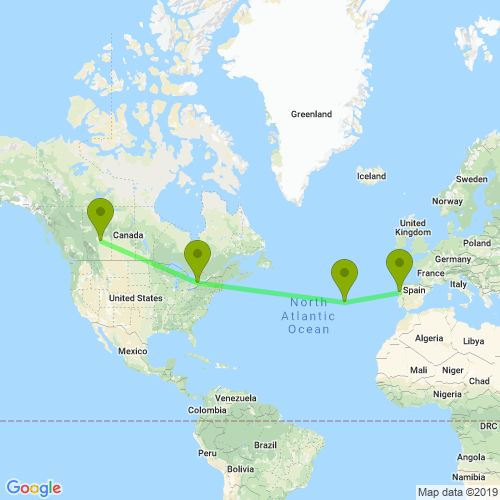
Recently, I was invited to give a talk at a philosophy workshop co-located with one of the conferences on interdisciplinary science in Porto. I spent close to two weeks in town. Dylan was in London for a meeting; we were lucky enough to be able to overlap our trips and take a little break in Porto for a few days.
Porto seems like a city in flux. When you talk to locals, they say it was very different five years ago. There's evidence of this in the cityscape. Wandering around parts of porto you'll find brand new developments sprouting out, giving the city a new face.
While the city seems to be growing and changing, by taking a few steps off the path---or, in some cases while staying on the path---you'll find derelict buildings. Walking to my accommodation when I arrived, I spotted a hollowed out building wedged between two still in use. Looking in the vacant windows you could see the roof had fallen in and only a few beams were left. This is the case in some of the more touristy areas as well. Next to some of the major museums, the university, or on your way to one of the port houses, you'll find buildings that are boarded, or with shattered windows.
I'm not sure what the story is there.
One of the reasons to visit Porto is to enjoy the architecture. Many of the city's historic buildings are covered in beautiful tiles. The facades and interiors of public spaces---including churches and train-stations and the like---are covered in scenes that are painted on tiles. The waterfront buildings are vibrant and colourful. You'll find bright buildings with clotheslines air-drying laundry above wine houses with delicious tapas.
There are also many examples of Baroque churches throughout town. These are gilt to excess, putting even spanish churches to shame. I guess that's the historical bounty of pillaging Brazil on display. While impressive, these churches are overwhelming: one was enough for me.
Interestingly, the cathedral is less visually shocking. Situated at the top of the hill overlooking both sides of the river, it's an older, more reserved example. I visited in the hopes of escaping a torrential downpour until the weather cleared. This was an excellent opportunity. While gargoyles have kept watch over many places I've visited, this was the first time that I'd seen one performing it's less spiritual duty: siphoning water away.
While I was aware of the cathedral before making my impromptu visit, I didn't know that one of its towers was open to the public. Clerigos Tower is most frequently suggested by travel guides, but the view from the cathedral is much more grand. Climbing up from the courtyard, you emerge to a panoramic view---possibly the highest in town.
The character of the city's architecture can be found not just in the facades of buildings, but also in the details and construction techniques. Many of the historic buildings in Porto with rich wood panelling actually have no wood at all! For instance, the walls and staircase of the famous bookstore, Livraria Lello, are made from plaster. At first glance, you wouldn't think it. Even when you're primed and looking for examples around town, it's difficult to discern the plaster imposters from the genuine lumber articles. Only when the facades are worn and chipped is it possible to be certain.
The people in Portugal are friendly and patient. They even overwhelmingly tolerated my terrible Portuguese. Some even taught me words so that I could make it through my next order at the local bakery a little more efficiently. Portuguese bakeries are as good as they are prolific. It's easy to start the day by grabbing and espresso and a tart while sitting in in a square.
Dylan and I happened to be visiting Porto during the 2019 Canadian federal election. When we sat down for dinner on the eve of the election, we found that the couple seated next to us at the bar were a couple from Calgary living in Vancouver. It's a small world.
I accidentally said "arigato gozaimasihta" to a Korean person for taking a photo of me while travelling, and I have never been so shamefully embarrassed in my life.
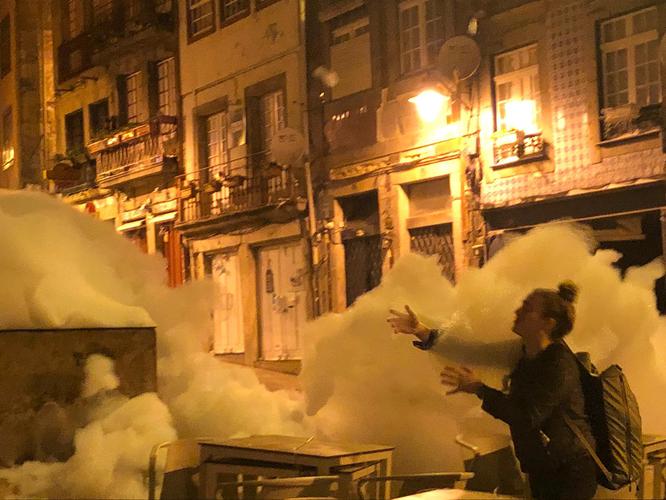
How do you catch a cloud and pin it down?
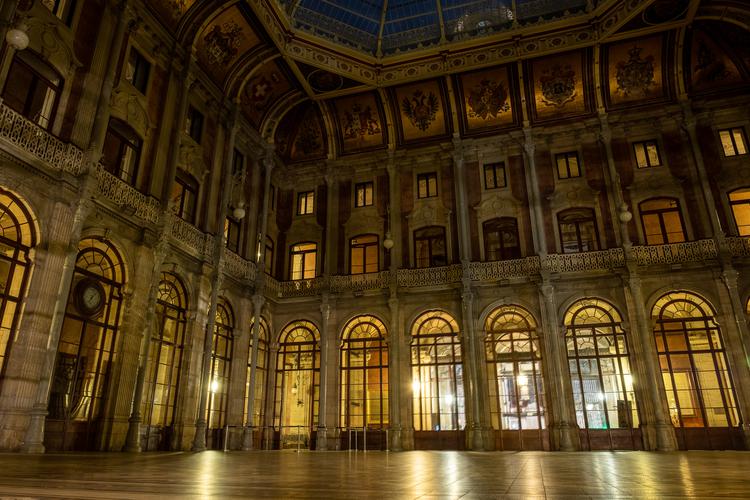
Exploring a neoclassical stock exchange at night
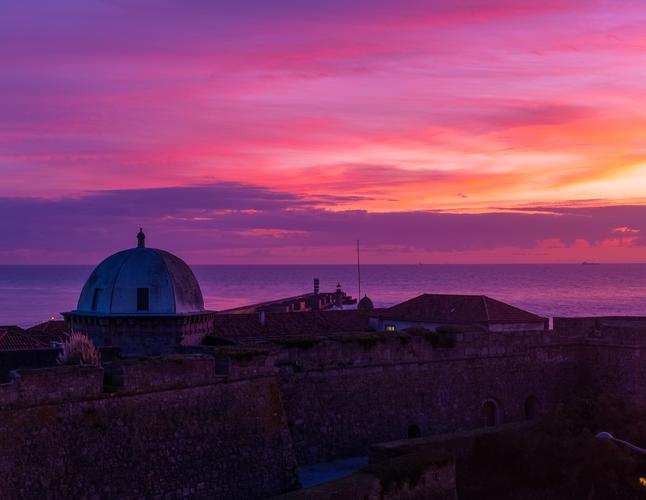
Sunset over a fortress at the end of the workshop. I learned a lot hanging out with the Porto gang.
There's so much interesting research on perception and embodiment out there. I'm excited to see how it shapes future work in machine intelligence and robotics.
Last leg of the trip
St Pancras railway station → London → Porto
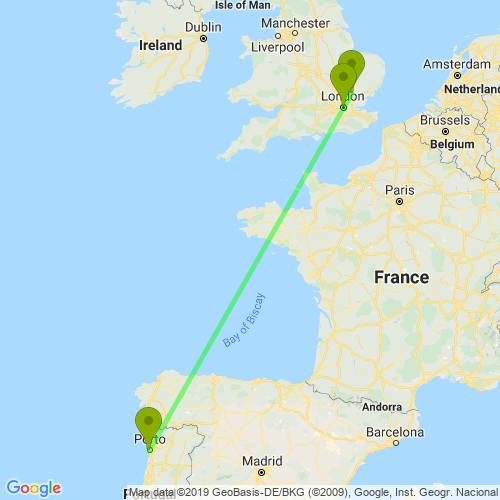
Recently, I was invited to give a talk at a philosophy workshop co-located with one of the conferences on interdisciplinary science in Porto. I spent close to two weeks in town. While I was mostly focused on work, I did have a chance to dip out and explore the city. Here's my thoughts after walking around town. Here's a list of some of the places that stood out:
Serralves is a contemporary art museum and one of the best galleries I've ever visited. The curation is fantastic; it gives visitors enough context to understand what the artist and the gallery are trying to communicate, without hand-holding the guests. Even if you're not a fan of modern art, Serralves is worth visiting: there's something for everyone.
The gardens surrounding the gallery are lush, and marked with several installations. In the center of the gardens is a fantastic example of art deco architecture: a house with a fountain leading from a cliff up to the main house.
Centro Portugues de Fotografia isn't a place highlighted by travel guides. It's close to all the tourist hot-spots, but receives much less attention.
It's worth a visit.
The centre for photography is a free museum located in a repurposed prison dating back to 1582. They didn't change much. The inner courtyard is a small square with iron bars for windows. The entrance to many exhibits is through heavy doors and bars.
Not all of the exhibits were worth writing home about, but several were exceptional. locating the gallery in a historic jailhouse gives it quirky charm. On the whole, it's a well curated gem close to where most people will be anyways. What's to lose by stopping by?
The Waterfront in Porto is a great place to wander and explore the city. There's an abundance of colourful buildings and neat narrow streets to explore. If you're willing to step off the tourist track, good, cheap food is abundant.
There's a number of wine houses along the shore of the river: a great place to grab a drink while watching the sun set flanked by Porto's iconic bridges.
A great way to get to the waterfront is to walk behind the Center for Photography to a look-out point of the river. From there, you can take steps that carve into the side of the hill down narrow streets that are decorated with the traditional ceramic tiles found in porto and a smattering of street art.
Epoca Porto is a great place for brunch. I had indescribably great eggs on sodabread toast. What was in them? I don't know.
early is a little cafe that seems to be built into an old bank. If you look into the back room, there's an old vault door that's mirrored on the inside. Dylan and I grabbed a bunch of plates to share as nibblies. Their roast cauliflower is the best I've had.
O Calcua is a nice little place close to the centre of town. A group of us went here after the conference I attended, and it was memorably tasty---served family style.
O Comercial is a treasure hidden away in Palacio da Bolsa: a historic stock exchange in the center of town. There's only a handful of tables, so it's a quiet little getaway.
Taylor's Port is the oldest port firm, but it's not worth the trek. If you're interested in boozy drinks, chances are you're probably familiar with winery tours, or have at some point wandered through a distillery. The joy of these tours is getting to see where your favourite libations are made: getting to walk through the process.
You'd think that port--a fortified wine--would be the best of both worlds. Unfortunately, it's little more than a walking tour through one of the historic storehouses. Save yourself the time and drink port at any number of other places in town.
Livraria Lello is a breathtakingly beautiful bookstore. If you are at all interested in visiting, make sure you're one of the first 20 people through the door at the beginning of the day. At any other point in time, it is unbearably packed. It can take two or three minutes to descend the stairs as you weave through all the visitors taking selfies.
While the craftsmanship is excellent, it's near impossible to enjoy when peering through the crowds. It hardly seems safe; I can't imagine how deadly a fire would be with the way they pack tourists in.
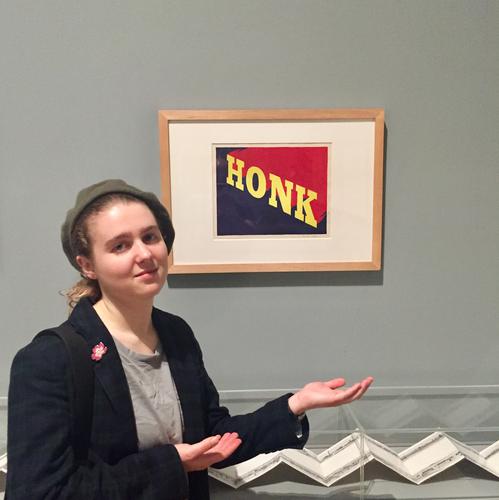
Press Y to
It's been 10 years since I've been to the Tate. The last time I visited was the beginning of a trip through London and Paris to visit the major galleries.
I remember seeing the turbine room when How It Is was on display: a massive empty container that swallowed the light up as you walked inside.
My first visit to the Tate was also my first introduction to modern art. Now I'm visiting on a stop-over.
Here are the four exhibitions that struck me most:
A retrospective of Panayiotis Vassilakis' work. Many of Takis' pieces made tangible the invisible electromagnetic forces around us. Impossibly large pieces---likely made of lighter materials---brought from their resting position to hover next to a large magnet.
In the exhibition they also had a number of Takis' notebooks, where he had engineering drawings and plans for sculptures. Curator notes had quotes where Takis discussed the interdisciplinary nature of Art and it's relation to engineering and sciences. You can feel that sentiment in his work. Early pieces used aeronautical instruments salvaged from WWII aircraft, taking functional technical gauges and repurposing them for sculpture. Some of his later pieces were simple enough to be made commercially available.
Ed Ruscha is an artist that started their in design. Many of their pieces are serious, visually appealing paintings, with weird mish-mashes of slogans typeset on top: bliss bucket.
Turning around the corner to enter the main exhibit, I was caught by a beautiful Rocky Mountain sunset with exaggerated blues and deep contrasting colours interrupted by typesetting over top: PAY NOTHING UNTIL APRIL. Every time Dylan and I re-entered the main room from one of the peripheral displays, I had to laugh.
One of the quieter exhibitions was Naoya Hatakeyama's cityscape photos of Japan. Naoya layers paper prints and transparencies over a lightbox. The resulting photos are scaled-down intimate photos of urban environments that seem to twinkle.
Dylan recently watched a documentary on Olafur Eliasson's work, and was taken with the mono-frequency light installations he did. While we were on our way to the Tate's rooftop lookout, we decided to take the elevators: a largely unused space. Once the elevator doors closed, and the outside light was shut out, the colour was sapped from the room by the yellow mono-frequency light. The elevators---a space you only use to get from one place to the other---was turned into an installation.
Serendipity.
En route to Porto via London
Edmonton International Airport → Vancouver International Airport → Gatwick Airport
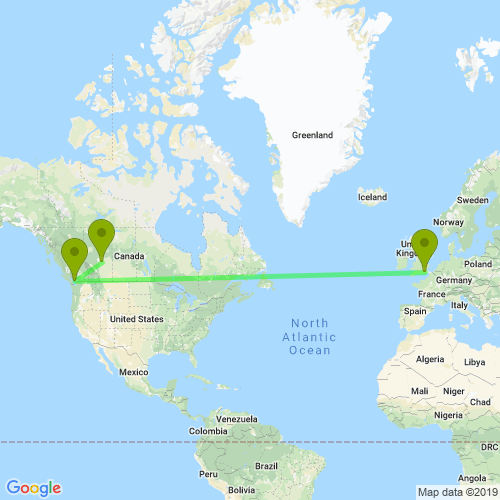
I recently tried using ipython notebook in a pipenv shell and realized that all of my imports were missing. This is because the the kernel selected is wrong.
In your project directory run:
pipenv install ipykernel
pipenv shell
When you start your pipenv, you'll see a shell name in your terminal like (my-virtualenv-name) bash-4.4$. You need to add that to the kernel list in jupyter notebook. Do that by running:
python -m ipykernel install --user --name=my-virtualenv-name
Restart your jupyter and go to your notebook. In the Kernel>Change Kernel menu, you should now see your pipenv in the list under my-virtualenv-name.
Select that and you're good to go!
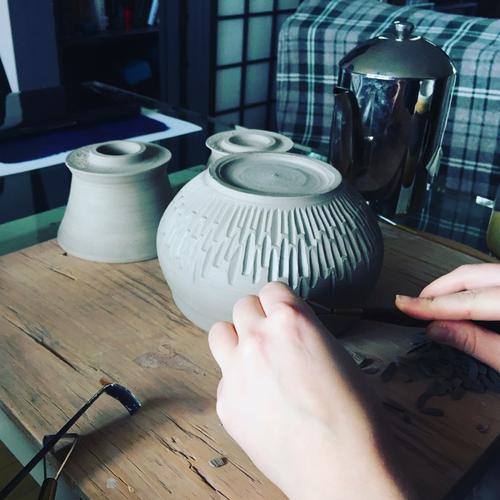
Having an artsy afternoon to get ready for tomorrow’s #pottery class. Can’t wait to see how this bowl looks with a pooling glaze.
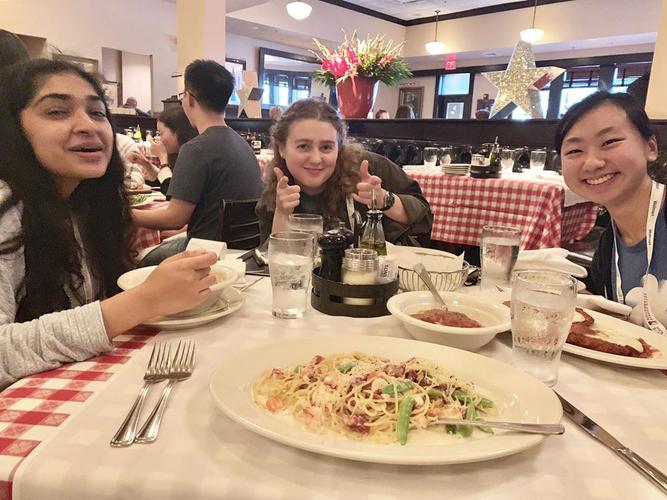
Wrapping up #ghc19 with some of my new twitterfellow buds and munching on spaghetti 🍝 🐦

The @tern gang at #ghcbeachboardwalk . I had a blast meeting all these cool folks at #ghc19 this year. Can’t wait to see what sort of shenanigans they get up to in the future. #sheinspires
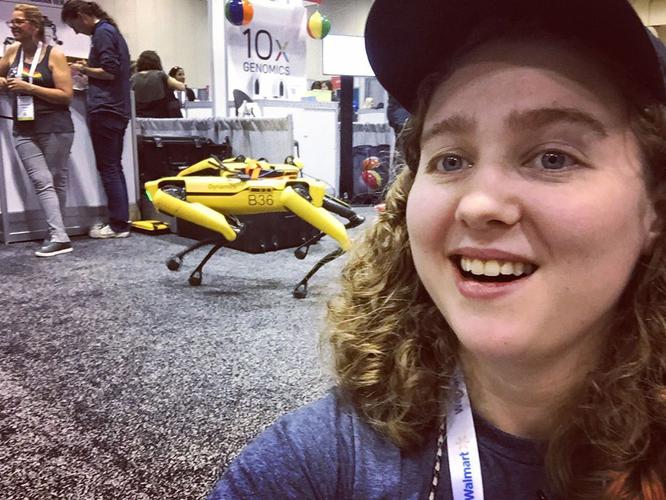
There’s an @bostondynamicsofficial robot booth at #ghc19 🤖I’ve always wanted to meet spot! ✨😍 They are so much more impressive in person!
On my way to #ghc19 in Orlando. Around 25 000 people are attending this year! Maybe I'll find some reinforcement learning friends while I'm there...
Edmonton International Airport → George Bush Intercontinental Airport → Orlando International Airport

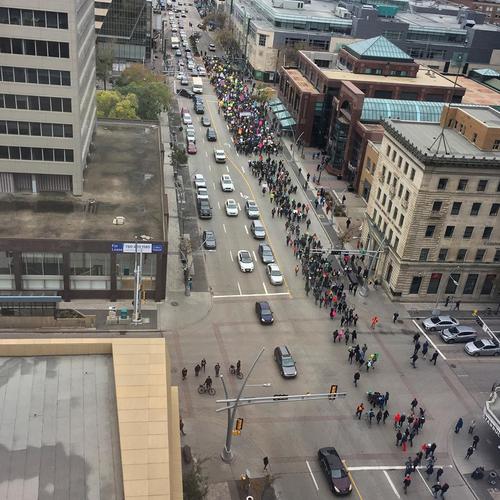
The #climatestrike in #yeg making its way down jasper ave. #weekforfuture
Misreading some derivations you did months ago and fundamentally questioning whether or not you know what maths is feels like a uniquely grad-school thing.
There's nothing quite like noting the trail of red-scribbles left by your advisor on draft manuscripts are slowly evolving into check marks.
I'm getting better at writing!
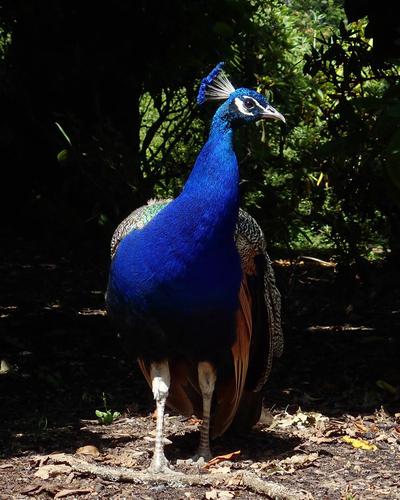
Walked up to beacon hill and made a friend today. They were very willing to participate in a photo shoot—gave me a number of angles to best capture their plumage. 🐦
On my way to Canmore for the Folk Fest.
Victoria International Airport → Calgary International Airport → Canmore, Alberta

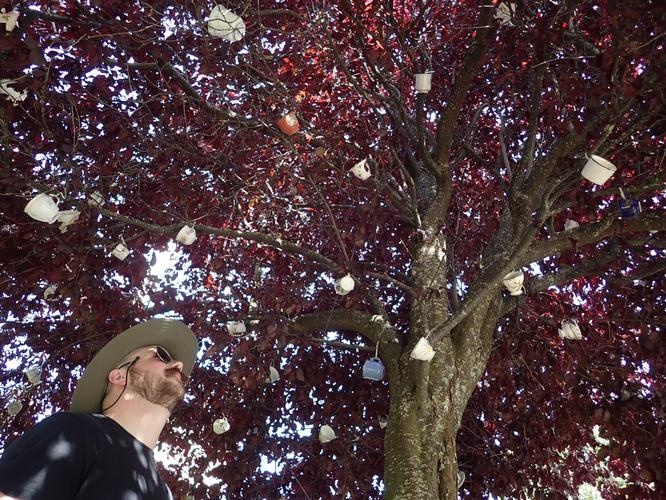
Went wandering through James Bay on the way back from Beacon Hill Park. We took a detour down a side-street and found one of the city trees had been converted into a tea-tree. ☕️ 🌳
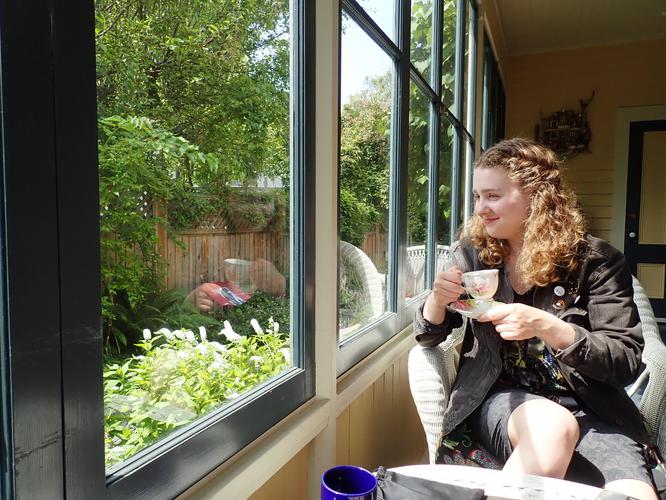
It's always interesting to see the origins of an artist you admire. Dylan and I meandered up to beacon hill to see Emily Carr house---the house Emily Carr and her sisters grew up in.
The museum was uniquely curated: sparse on details, but scattered with quotes that captured the family's experiences. It's fitting for a modernist.
The Carr's house was a large victorian home close to the sea-side, butting up against Beacon Hill Park. Many of the quoted passages throughout the home captured the. It's easy to see where Emily Carr's interest in capturing landscapes came from.
One of the most exciting aspects of the home isn't restoration-related. During the winter months, when the home is closed off to the public, Emily Carr house is hoping, to have a artist residency. I'm excited to see what comes of that.
After paddling, Dylan and I went down to Victoria for a few days to sight-see before heading back to Alberta.
The greyhound looped around MillBay before heading down the Mallahat, which was a wave of nostalgia.
Courtenay, British Columbia → Nanaimo → Victoria, British Columbia
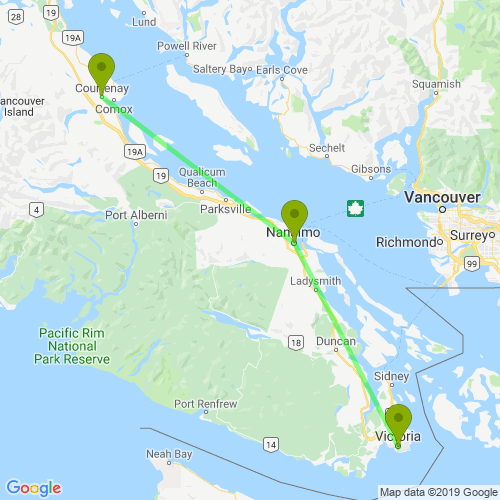
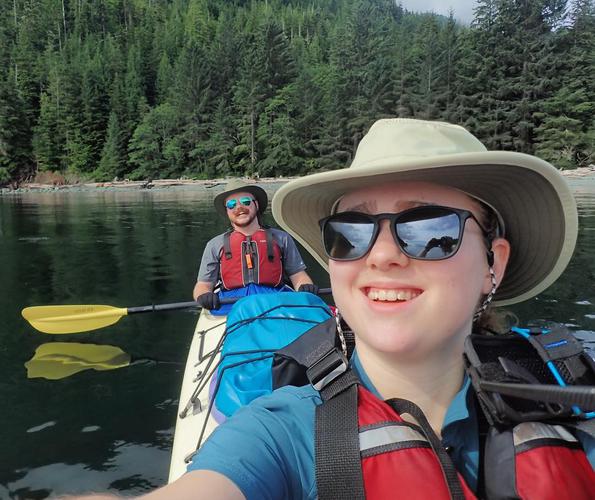
Going on an adventures in a sea-kayak for two 🚣🏼♀️
Quadra Island → Campbell River, British Columbia → Telegraph Cove → Blinkhorn Peninsula → Johnstone Strait → Hanson Island → Plumper Islands → Hanson Island → Telegraph Cove
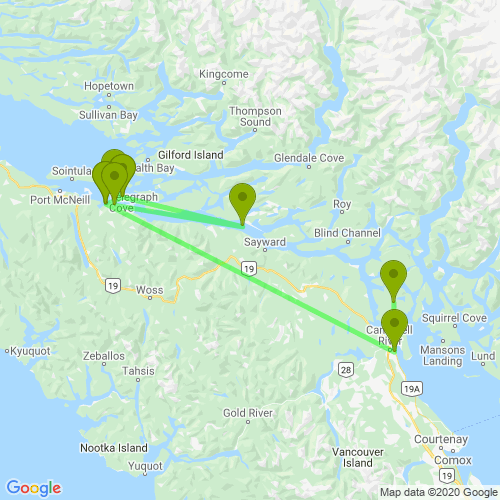
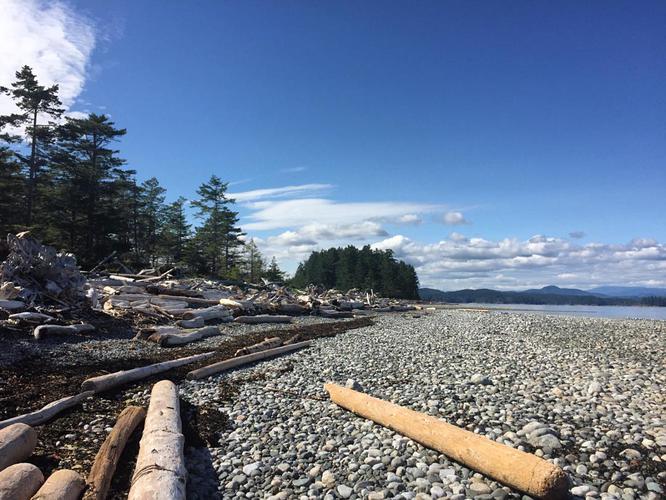
Hanging out on Quadra island before we put in tomorrow 🚣🏼♀️ with all the driftwood on the beach, I’m really tempted to make a throne 😬
On my way to Quadra Island for some sea Kayaking
Edmonton International Airport → Calgary International Airport → Comox, British Columbia → Campbell River, British Columbia

Enamel pins are just brooches for youths.
Here are collected messy notes from Short's theory of signs. Bits, pieces, and excerpts that I found interesting.
the key insight of these discussions is the need for generality. Generality means thinking in the general sense. Grey is not a single perceptual experience, but rather a collection of classes and instances.
Saussere: linguistic rules determine language and speech; study on the former depends on an a priori study of the latter. This inspired structuralism and actions of people, & thus the actions and history of society depend on an abstract representation which individuals are unaware of.
It was suggested that semiology could be carried over from language to all social behaviour and signs in the broadest sense. This is problematic, as it does not provide a satisfying description of how thought and language manage to be about the world.
Peirce adds an interpretant: the response a sign elicits. A sign, an object, and an interpretant are only taken to be one of three in relation to the other.
I guess an important thing to bring up is that signs---through the process of interpretation---give rise to something beyond the impression.
Each category has to justify itself by induction, giving it a limited and approximate validity (CP 1.301)
Really foreswearing the a priori necessity.
The three flaws of Peirce's semiotic of 1868:
Thought lacks objects not constituted by thinking
A thought-sign being interpreted in a subsequent sign suggests infinite semiosis
If significance depends on interpretants--actual or potential--being signs, then we have no non-circular account of significance.
Peirce fixes infinite semiosis by creating indices.
Icon signification outside of resemblance without thought.
Icons derive their meaning from the feeling evoked by resemblance, thus, non-conceptual creatures can be sign interpreters.
What a sign signifies is from an a priori relation independent fo the sign actually being interpreted. Is then a type of possible interpretant grounded in interpretability.
To make this line of argumentation, two additions are required:
Subjunctive conditional: A form of counter-factual. E.g., "Bob died yesterday. If he had died tomorrow, he would have been 98 years old."
Final Causation: interpretation is purposeful, so interpretation must be relative to a possible action. Interpretability must be real and independent of it actually being actualised: reality of what was, is or could be: potentiality.
Grounding: in metaphysics one thing grounds another, if one thing accounts for the other.
The final problem is infinite semiosis:
1887 pragmatic maxim (w3: 226)
Consider what effects which might conceivably have practical bearings, we conceive of the object of our consideration to have, then our conception of these effects is the whole of our conception of the object.
It is only through purposeful action---even if only a potential action---that worlds and thoughts relate to a world beyond themselves.
More on belief and habit in (w3:247, cf 512)
A stone, a star, or a person is continuous spatio-temporally: undivided though divisible at any number of points... A church, a club, a crowd is never simply the members it has - pg 80
Clearly, when we build systems which perform classification and clustering, we are identifying generalities and continuities in some sense. There are an assortment of examples and kinds which through some form of training are identified. There is some continuity of perceptions which give rise to "cat" , or 'cluster 0'; however, many times they
There is a contradiction between teleology and behviourism and reductive theories. This can be found in mechanistic arguments.
We omit such a clause, as many scientists have thought that subsumption under law suffices to explain the phenomena non-telelogcially.
Fixation of Belief => How to Make Our Ideas Clear
Different minds may set out with the most antagonist views, but, the progress of investigation carries them by a force outside themselves [Peirce's Nominalism] to on and the same conclusion [his realism]... the opinion which is ultimately fated to be agreed upon.
Truth isn't clear when we have more boundaries: china isn't the border, or the people, or the govt... Static sausserean approaches are limited in these fuzzy ways. Behaviour, experience, agent => Peirce.
When we add the interpretant, we add context, interaction, something beyond original sensation.
Concept that it relates to in a meaningful way outside of stimulus.
Only reason that it works in supervised learning is that it is giving.
In montreal for RLDM 2019
Edmonton International Airport → Montréal–Pierre Elliott Trudeau International Airport

It’s not inspiring when you’re stuck in an elevator and your compatriots ask if it’s your first time.

It is noon, and the smoke blanketing Edmonton is so thick that it feels like sunset. #yeg
Back home.
Kansai International Airport → Vancouver International Airport → Edmonton International Airport
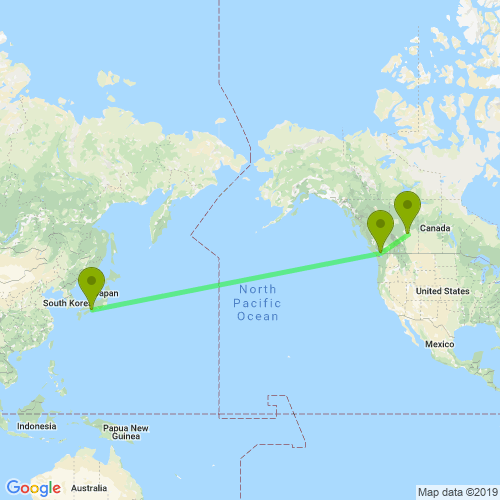

Getting ready to come home.
Kyōto Station → Shinagawa Station → Narita, Chiba
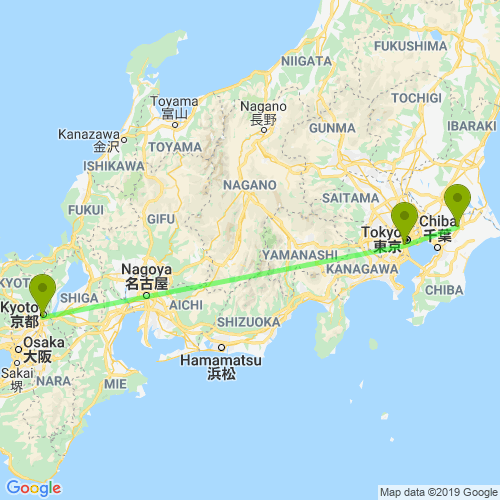
I’m starting my day in a Japanese Cafe and a lot of the radio ads sound like the intro to a future-funk track.
I’m mesmerized.
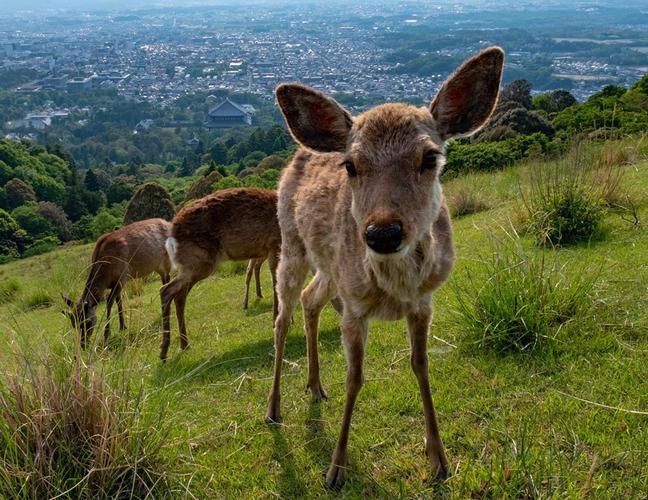
Yesterday I visited Nara and hiked to the top of Mount Wakakusa. The friends I met at the top weren’t just hanging out at the peak: deer are all throughout the city, mingling with people; however, this congregation was a bit more wary of me than the city-dwellers. After sitting and resting a bit they warmed up to me and continues grazing as I watched the sunset over Todai-ji. In Nara, deer are sacred natural monuments believed to be messengers of the gods by one of the local temples.
Kyōto Station → Tōdai-ji → Mount Wakakusa
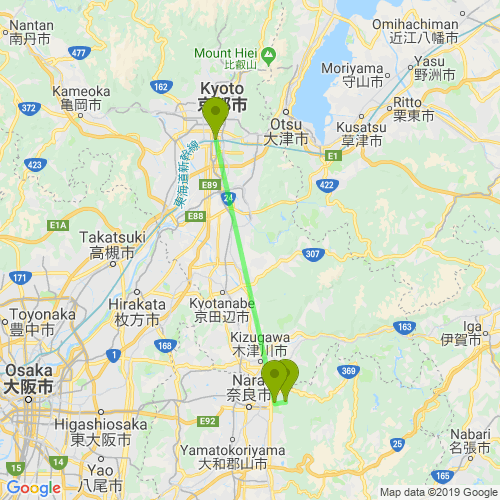

Yesterday I made it to the top of mount Hieie: the second highest mountain in the Kyoto prefecture (according to the family I met at the top). At the top of the mountain I took a break to enjoy some tea and met three groups of people who made it to the top.
The first was a Canadian from Toronto who was traveling.
The second was a trail-runner. He started digging around behind one of the trees and retrieved a mysterious granite pyramid which he placed in front of the tree. He said it was famous. I’m still confused by this.
The third was a Japanese family who hiked the mountain. The father started telling me how young Japanese people don’t like hiking and that Japanese people don’t hike anymore. He told me about all the mountains in the area, the number of mountains in japan, and the heights of their peaks.
I left the mountain informed.
Kyōto Station → Ōtsu → Mount Hiei

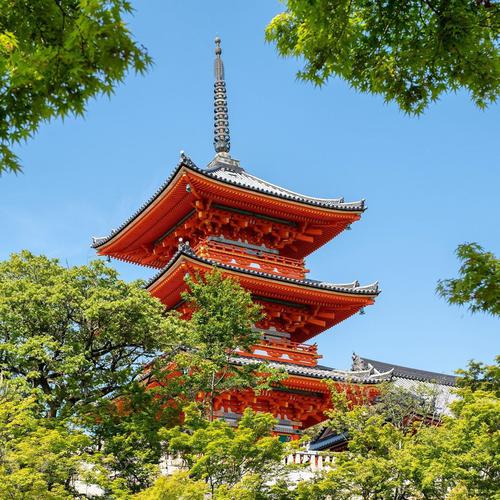
Wandered up to Kiyomizu-dera yesterday: a temple founded in 778. The view of Kyoto from the pagoda is breathtaking. Overlooking the city there’s an architectural gradient from the ancient to the modern. Like many Buddhist temples in Kyoto, the gardens have a dense canopy covering the paths. I found a spot where the pagoda was peeking through the trees.
I made it to the top of Mount Hiei, a sacred mountain in Japan. At the top, I met a guy from Toronto. Canadians are everywhere.

Photograph of the the moment I consider giving it all up to become a tea-farmer. Maren recommended coming to @obubuteafarms for a tour of their estate. The tea tasting we had was so memorable because we also got to see the whole process: from tending to the bushes, to harvesting and processing! I even learned a few new brewing techniques 🍵
Kyōto Station → Kamo, Niigata → Wazuka, Kyoto
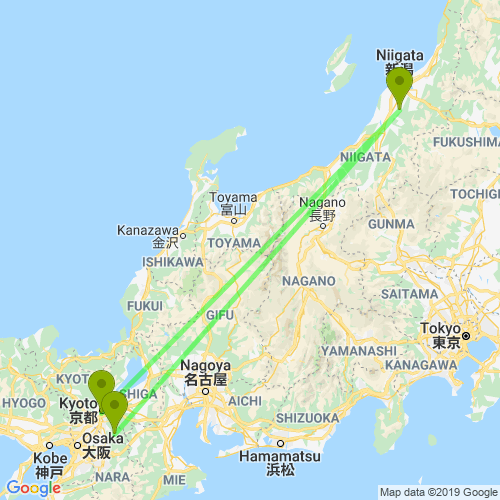

Yesterday I went to Kinkaju-ji: the golden pavilion. I got there early to beat the crowds of tourists, and it was filled with school-kids instead! A group of them wanted to take a picture with me. I’m still not sure why 😂 maybe it was a school assignment?
Today we went to tokyo SkyTree. Surprisingly, it was quite nice and relatively relaxed. There were few people despite the today being the start of Golden Week. The air was filled with smog, so we couldn't see too far, but the weather was decent, so we got a reasonable view of the city.
We had lunch at a little shop on the 340th floor of the tower.
Under the tower is a massive shopping complex. Some of the more experimental brands were hilarious. I found a sweatsher with a frame from Harry Potter on it: Ronald Weasley on a couch, pouting. It looked like one of those fruit of the loom sweatshirts people used to get photos printed on in the 90s.'
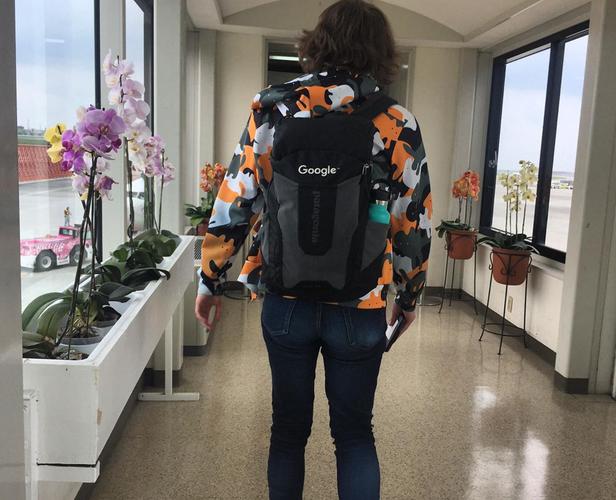
The Okinawa airport has orchids all over the airport, even in all the jetways leading to the plane. It’s a nice way to be greeted when you land 🌸
On my way to Kyoto via Hello Kitty Train!
Naha Airport → Kansai International Airport → Kyōto Station

One of the most frustrating aspects of traveling with friends who are men is having your change, or your tickets, or even your passport handed off to the man. Doesn’t matter if you are booked and paying separately, the dude gets your stuff.
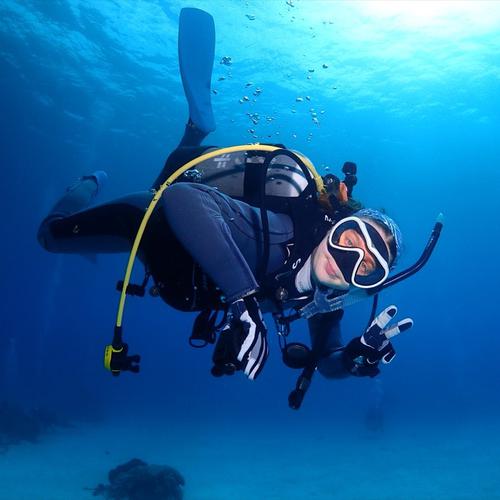
Last day of diving in Okinawa. I’m glad I decided to pack my dive computer last-minute. Exploring the reef in Okinawa has been an absolute treat—so much life!
On to Kyoto!

Unexpected upside to traveling in a country who’s language you don’t understand: all location-based ads are effectively blocked by being uninterpretable.
It’s like Lorem Ipsum.
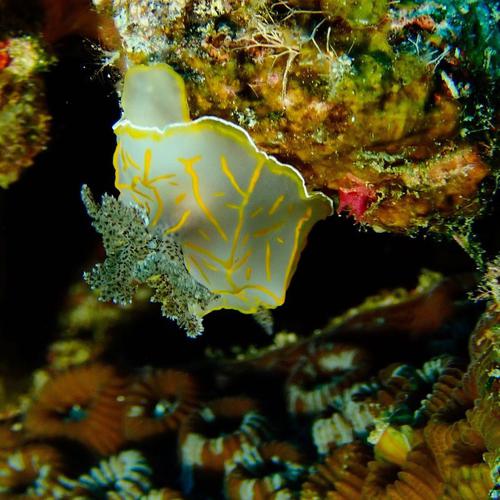
I found this little friend yesterday! A cute little Nudibranch. I love how varied the colours and shapes and sizes of sea-slugs are! They’re so delicate and beautiful. I could sit and watch these guys inch along all day 🐛
I’m really fortunate my trip aligned with the right season to see them. They only come out when the water is cooler; when it warms up, they head inside the coral to avoid the heat.
I couldn't book in for diving today, so it was a bit of a write-off. I didn't have much energy, so I just milled about around town. I found a nice urban market to have breakfast and meandered the side-streets.
I milled around the city center, dithering about which onsen to go to. Travelling around Okinawa is challenging without a vehicle. I found a little crafts store and spent some time taking in weaving and ceramics. Not sure about what to do, I dithered too long. I ran from the station to my bus stop, just missing the bust to the spa. I guess the place the Thai kids recommended will have to wait until another trip. I slowly made my way back to the hotel.
Today, I was one of many people picked up to go diving. When I hopped on the van, there was already a lady from Ohio. We chatted it up, and I found out she did software training with doctors. Neat. Next, we picked picked up a couple who spoke french on the way over. After seeing my shirt, they asked me if I was from Alberta. I was shocked to find someone on a dive boat in Japan that recognized Amii: the machine intelligence institute I belong to.
I climbed up to the top deck and chatted with them most of the way to the islands. Serendipity: they were both Canadian diplomats serving in South Korea. The both wanted to know more about AI. Evidently, their work touches on it: Korean investors are keen on Canadian, (and Albertan) AI research. I gave a boat-ride explanation on the differences between different machine learning methods, and how Reinforcement Learning---my favourite branch of AI---differs from many of the more common approaches to machine learning.
Today we did three lively dives: among the spottings were angelfish, clownfish, and sea-snakes. I had never seen clownfish before: one of the sea-creatures on my bucketfish. They were almost whisp-like; sentinels hovering over their anemone, keeping watch.
On our last dive, we went to a location with an abundance of sea turtles. It's always relaxing to watch these graceful creature slip through the currents; however, this dive was shockingly distressing. The dive-sites were heaving with other dive boats, with visitors kitted up to the gills. Almost every person on the other boats had top-of the line cameras with all the external flash-bulbs and lights. Thick gloves; thick booties.
As soon as our group made our descent, we found another group that was laying down on the coral reef. One of the divers was anchored onto living coral to get a shot of a turtle, completely oblivious that he was killing a vital member of his model's ecosystem. Satisfied with their shot, they kicked off the coral, breaking off six inches of stag-horn coral. For all the money poured into their gear, they didn't have even an ounce of buoyancy control.
There were so many disrespectful, dangerous divers. Crowding the marine life, grabbing the coral through the protection of thick, cumbersome gloves. Oblivious to their fins bashing into broad coral fans. If tourists keep treating the reef this way, it wont exist for much longer; ruined for everyone. Most of all, the turtles.
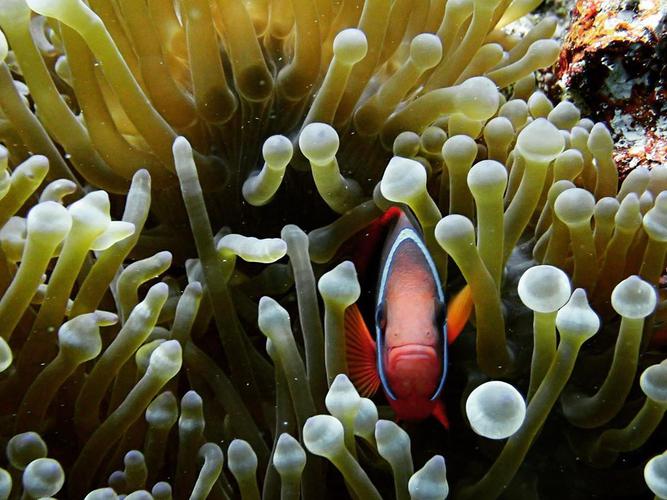
It’s my first day diving in Okinawa! Plenty of fish hiding away in sea anemone 🐟 This is my first time diving in Asia, and I’m really enjoying taking in all the surprising differences to what we see in the Americas.

Today was my first day in okinawa. Tetsu picked me up from the hotel and we made our way to a small harbour for the day. I was the only person picked up, but three Thai kids around my age met us at the boat. They were lovely.
We saw so many nudibranchs in every shape and size: my favourite sea creature. Seeing so many was a real surprise. During the summer, these sea slugs make their way into the coral to beat the heat. Being on the cusp of the season, it was a gamble as to whether we'd see them. This was the first time since high school that I'd seen them. Unlike my encounters in the Florida keys, the nudibranchs were so varied in colour: jet black, pale cream, bright blue. Spiky, smooth, and geometric.
It felt good to jump in the pool. To be honest, I hadn't quite relaxed since arrived in Japan. I had a lot of fun, but there was no down-time. Laying back on the boat between dives and letting the sun warm me up provided a much needed breather.
When we arrived back on land, Tetsu asked if I wanted lunch. After spending the morning swimming with the fishes, we ate at a local fish market. We wandered around the stalls and settled on a local soba place: the best soba I've had.
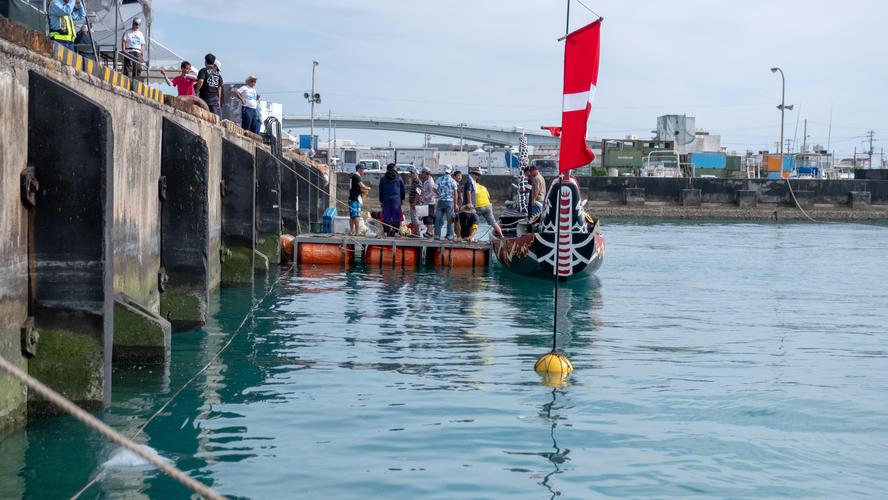
When Tetsu dropped me off at the hotel, I washed off the salt and found a cab to the Naha Hare. Lined up at the harbour were dragonboat races, board-walk amusement park rides, and a coast-guard ship.
There was something heart-warming about the fair: it was clearly a family event. Seeing parents, children, and grandparents sharing picnics on the tarmac and watching the races was refreshing. I was the only tourist that I could spy. Not even military families made their way down the island; however, I find a lone gaggle of white women in kimonos.
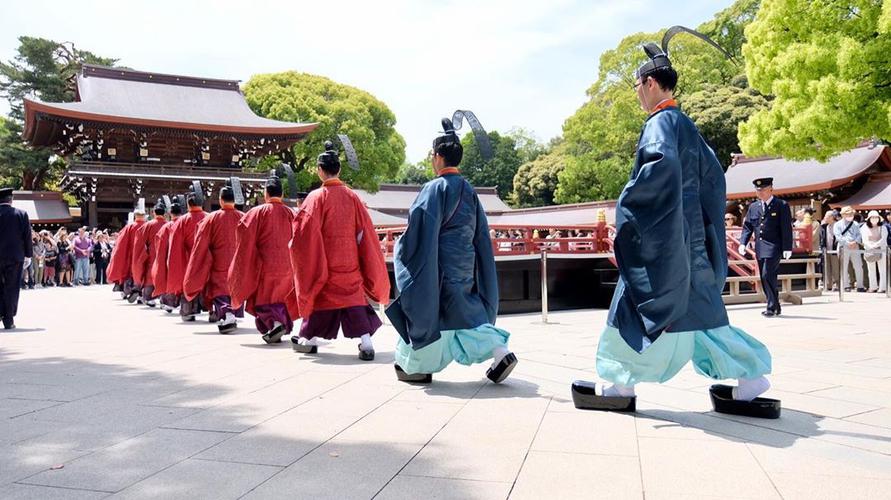
Today was the last day of Haru-no-Taisai, the spring grand festival at the Meji Jinju. Today’s service is the largest Shinto ceremony of the year for the shrine. Amongst the rituals is a sacred dance based on a poem written by Emperor Showa that calls for world peace.
That's it for Tokyo! On to Okinawa for a little bit a scuba-diving and some beach time.
I made my way to Meji-Jinju for Haru-no-Taisui: the spring festival. It's the largest shinto ceremony of the year at the shrine. Rituals include a sacred dance based on a poem for uninterrupted world peace.
Large tori gates lined unmistakably marked the trailhead. The only thing you could smell was lush forest decay. Large trees formed a dense, long walk to the outer courtyard of the shrine.
When I arrived, the service had started. There were many people seated facing inwards. Through the rows of those seated above at the dais, I could barely see the priests.
In the outer courtyard, it was an ordinary day. Devotees arrived at the shrine, making a steady chatter of coins being dropped into offering boxes. So much noise outside while such a somber service inside.
I waited and watched, hoping for a glimpse of the ceremony. A drum sounded. Someone let out a call. A procession made their way down the stairs, walking single file and in unison.
Haneda Airport → Naha Airport
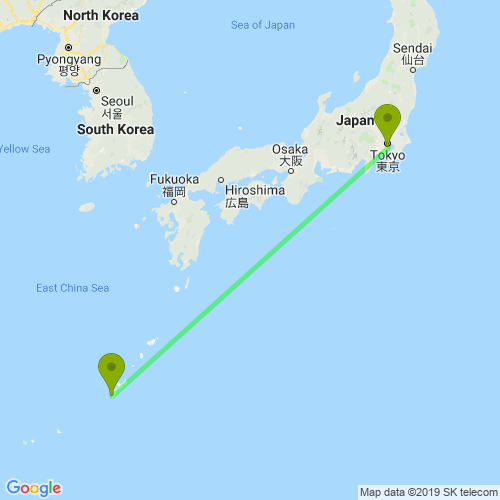
Today Matt and I went to the Ghibli museum. I opted to wake up and head over a bit ealier to take in Tokyo craft week. I made my way over and found a small cafe that specialized in roasting and pour-overs. Swing jazz in the background. The man was friendly and greeted community members walking by, starting their day. He ground coffee for both of us, letting me smell the aroma of each to learn a bit more. I sat and enjoyed my cup, charting my path for the day.
I ambled down a street lined with artesans. I found a yarn store that would wind balls for you based on the yardage you need. I bought a fuzzy frog coin-pouch. The whole street felt like sidney outside of victoria. It had the same pace of people strolling up and down the street starting their day. I followed along.
There was really only one particular place I wanted to visit, and it was shut. I moseyed up and down the street to make sure that I was in the right place. Just as I was about to leave and head to the museum, a trendy-looking woman came barreling down the street to open up the shop. We chatted about about ceramics, and I picked up a chawan in natural colours with green glass pooled at the bottom.
I had to book it over to the museum to make it in time for our slot. Angling for a snack, I made my way into a tea shop that specialized in darjeeling. I was welcomed in by the woman running the shop. By the time I figured out they had no snacks it was too late: I felt like I could walk away from the woman running the store after she was so welcoming. I left with a great cup of tea and huffed it across one of the most beautiful parks I've seen, but regrettably didn't get to enjoy.
I could see why they chose to have the ghibli museum in such a magical, natural park.
It was fascinating how the unmistakably ghibli style was rendered into reality. The familiar shapes and details found in ordinary materials and objects. Even the plants had the look, although effortlessly. None of it felt cultivated.
I was struck by how the crowd interacted with the space. Photos were prohibited, save for a small spot on the roof-top terrace. This meant people were paying attention.
The exhibits didn't have too much content, but what was there was all informative and impactful. A series of rooms set up to look like an animation studio outlined key aspects of the process. My favourite was the story-boarding. The room was plastered with reference images from all sorts of films. I'm not sure if they were originals from film-making, but they were certainly hand-drawn. It was actually a very emotional experience. There were drawings of character studies out in the open, pinned with thumbtacks to the wall. Anyone could accidentally touch them or damage them, but they were in well cared for.
On a table were three art-books. Inside them were plastered cut-outs as a study for one of the films. Pieces of origami paper were used as borders and backgrounds. Everything from horoscopes to trains to military uniforms---all neatly placed in reference books.
The room was filled with treasures. Small sculptures, trinkets, prototypes, reference books piled into a mound. Chaotic productivity. I was inspired, although maybe my inspiration comes from a cargo-cult mentality. It looks productive.
There was a lot of care put into the details. Even the smoke-detectors had caricatures painted around them. There was a cabinet downstairs you couldn't open. Unlike the doors above it, it wouldn't budge; however, if you bent down---to the height of a child---you could lift a flap and peek inside. There was a collection of plush characters and an Oscar. It's not flaunted, but left hidden. You have to be curious to find it.
I bet there's countless treasures I missed.
Akihabara Station → Ghibli Museum
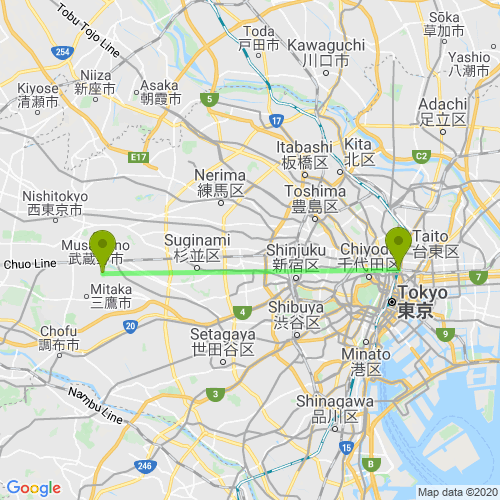
I'm sitting in a small floral shop getting ready for the day. I managed to sleep in and get some rest. I actually came here for dinner yesterday evening after wandering around town. There was a bit of a line: around two hours. I asked the woman at the end of the line about the cafe, and she said she would come and visit every time she was in Tokyo.
If it's so good you'll wait in line for two hours to get into a place you frequent, I guess I'll wait, too.
I started the day by going back to Shinjuku and seeing what it was like with more people out. I found a little side-street with a sign pointing inwards: COFFEE. I obliged.
Hiding in a fashionable and bare building was a tiny place. I ordered a matcha latte that was revelatory. While sipping at a swing-out bar-stool, I noticed a stack of booklets tucked neatly into a holder at the table.
Tokyo Craft Week.
It turns out the place Matt and I were going to tomorrow had plenty of little artisans around. I was excited. After polishing off my latte, I headed to the national gardens for tea-time.
I took it slow, looking for the traditional tea house tucked away. I found it sprouting up next to some bushes, almost hidden. I practiced my best polite entry and was greeted by an elderly lady in traditional formalwear. She sat me on a bench along the wall and handed me a tiny, fluffy sweet in the shape of a cloud.
I slowly sipped on my tea, listening to the rain tap on the thin roof. I continued around the park, rain coming and going with no particular direction. I found a cherry tree that had fallen, with a poem written on a sign next to the decaying husk. I crouched down, pulled out my phone, and drew the characters---like I was finger-painting on the screen. I wanted to read the poem.
There was a greenhouse with many micro-climates and a prodigious collection of carnivorous plants.
I still had a few hours before Matt's reservation at the robot restaurant. I passed the time by wandering around shinjuku. I heard a loud chant in the distance. I walked around until I found a procession and caught up with them. I think they were chanting to the new emperor that ascended to the throne today. There were people lining the streets looking at them, many with a look of irritation or bemusement. The procession was quite earnest about whatever they were preaching.
I then made my way to a few to a few shrines in the area. They were completely deserted because of the drizzling rain. One of them had a Buddha holding a staff that looked just like the sculpture in the National Museum of Scotland's statuary. I found that reassuring.
Harajuku → Shibuya → Shinjuku
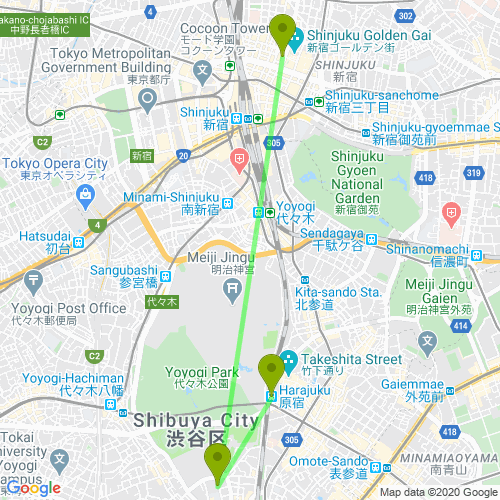
I’m not sure what it is, but I find even the way I think changes when I have a pen in my hand. It’s one of the reasons why my lab note-book is still a book rather than a tablet. 📚
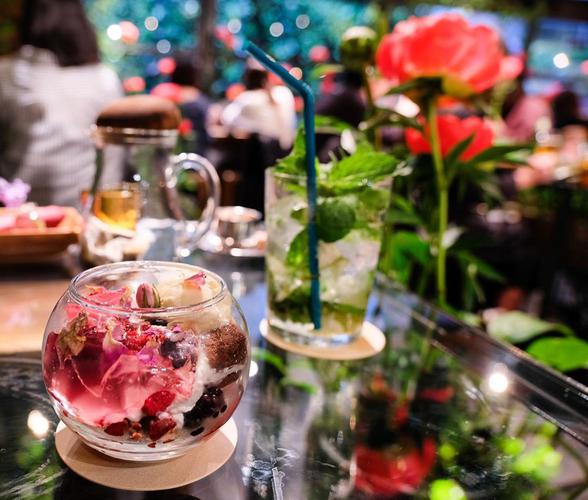
I was wandering around Shinjuku looking for food and found this little flower shop with a tea house in the back 🍵 I ended up waiting in line for over an hour, but it was totally worth it. The parfait has rose jam and edible flowers, and the mojito was one of the best I’ve had. Of course, sitting in a little indoor garden probably helped, too 🌿 . . . . #tokyo #japan #travel #travelphotography #yummy #foodporn #explore #flowers #food #foodphotography
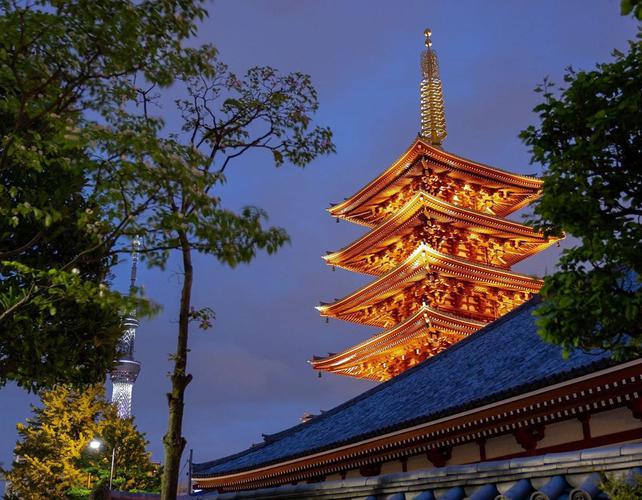
The pagoda at Sensō-ji with the Tokyo sky-tree peeking through the trees. A mixture of the old and the new.
A nice side-effect of new Game of Thrones episodes while I’m traveling: I’m encouraged me be present in the moment and not look at twitter for fear of being spoiled.
One of my favorite kinds of people watching when I’m traveling is observing selfie-taking. It’s fun seeing the difference between how people hold themselves when they know they’re going to be seen, and how they relax afterwards.
I say this with full self-awareness. My family doesn’t just want to see where I’ve been, they want to see me there!
This morning, I opted to do something familar: to retread my steps and go back to the renoir for a cup of coffee.
Afterwards, I trekked out to harajuku. I found the famous street and ambled along. Even at 9 A.M. it was already heaving. The streets were bursting at the seams although much of the street was closed.
I have to admit, while some aspects are wild---e.g., rainbow toasties---the street was otherwise unremarkable.
I focused on brahms path and confirmed a suspicion: it is named after the composer. Trundling down brahms path, Being one street removed, really changed the feeling. Even the smell of lush plants growing on the sides of buildings was nice. I charted out the places I wanted to visit and let interest guide me. When I found something unusual or mundane, I let that impulse guide me.
I found so many neat streets---interesting nooks and crannies. I went to a little coffee shop next to shinjuku. It had low ceilings and beautiful heavy wooden seating. I ordered a slice of cake and a pourover.
The couple sitting next to me seemed pleasant. They commented on my choice of cake. We started to chit-chat and I found out that they were from California, from SanFrancisco. One of them did arts and life reviews and commentary.
We chatted about their career, and the sustainability of the arts community in a city being crowded out by tech. They asked me what I did, and I mentioned I was a grad-student studying AI. One of them worked at GoogleBrain. You can never escape. There is no holiday.
This is a big day; it's the end of an era: an imperial era!
I went to Roppongi hills and wandered around a graveyard. A woman on a bicycle rounded the corner and pushed up the hill. A collection of pigeons emerged out of nowhere and followed her---a cloud.
As I was looking for a place to find coffee, I walked by a park with some homeless youth. what struck me was their organization. They were spot-cleaning their clothes, blotting then carefully with small towels.
Every now and then, I worry that I'm spending too much time on trip advisor, or the like---I'm focused too much on finding where to go and not enjoying where I am. I should be thinking around what's around me.
I ended up going to zozo-ji and exploring the mausoleum of tokigawa shoguns. I felt out of place in the small courtyard. There were no western tourists. It was peaceful watching people pray. A handful of the visitors bowed and prayed at select, specific shoguns.
Up at the temple's main hall, many people were lined up to bring incesnse to their forheads and sprinkle it into a burning pile in a bowl.
I was surprised by how gilt the temple was. It was almost as gold as a spanish church; however, it wasn't overwhelming. I think this is because the temple was restrained with its decoration and ornamentation: while select statues were complex, the room as a whole was minimalistic.
Also, I turned a corner and found an elevator. Could you imagine an elevator being retrofitted into a historical church? I don't believe I've ever seen one. When I found the elevator---an anachronism---it struck me how these spaces play a functional role for a large number of people. These temples are spaces that are designed with a practical purpose.
Most people non-religious people in japan pray at shines or private altars, although they don't identify as shintoist in surveys. You can see this in how vibrant the communities are around shines. There were so many families and young adults practicing their religion. At small shrines I walked by on the way to the temple, there were so many people casually stopping to pray.
In the evening, I went to a more popular Senso-ji: an ancient buddhist temple. It is one of the most popular temples in Tokyo to visit.
Droves of people. All of them milling about. I was overloaded with the sounds of people rattling sticks to find their fortune, the sound of people throwing their coins as an offering into massive slatted boxes before bowing in prayer.
While I had my tripod out taking shots of the temple two groups of men came up to me and started chatting. The first man was clearly off. With my chunky camera and travel tripod, I stick out. I was respectful about where I placed myself, making sure not to block the throngs of people moving by. I did stick out visually, though. The first man was maybe in his forties and hovered around me. He cracked jokes---introducing himself as 'Johnny Depp' and photo-bombing---but also silently stared at me in the distance. Something seemed wrong.
Later, a pair of men came up to me: one much older than the other and with far fewer teeth. They told me some things that I didn't quite catch, and the younger of the two suggested I return after dusk for better photos. The two asked to take a photo with me and continued milling about the area. When I bumped into them again, the older of the two gifted me a boar key-chain. I think it was because they saw me offer to take a photo for a family.
It's strange how two similar interactions can diverge for seemingly minor reasons.
Roppongi Hills → Tokyo Tower → Zōjō-ji → Sensō-ji
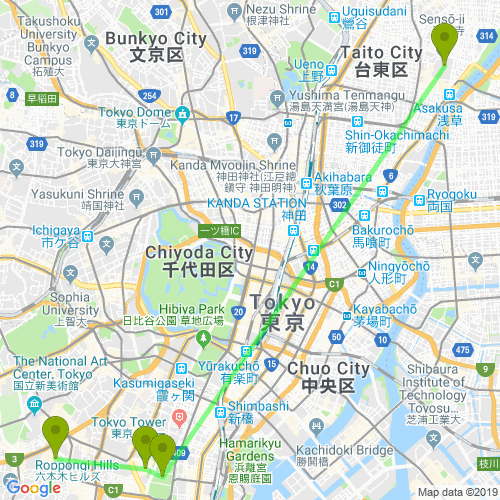
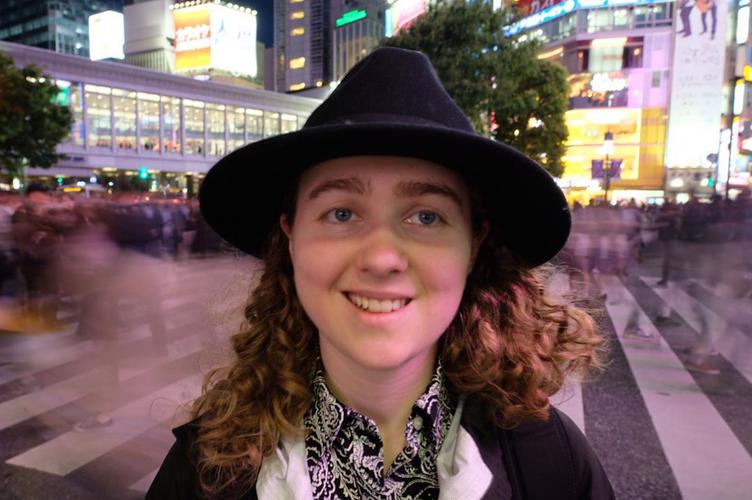
Shibuya Crossing is one of the busiest crossings in the world. People pour into the scramble from all directions, zig-zagging frantically as they all meet in the center of this vast intersection.
We woke up early to go to Odaiba: an artificial island filled with amusement parks and expo halls. The train to the island had a wonderful view; we dipsy doodled east, crossing a bridge over to the island. Through the dockside cranes you could catch glimpses of mount fuji: a little triangle on the horizon slightly obscured by particulate and capped with snow.
We were on the island to see the Team Epsom Digital Art Museum a concept piece that dwells on themes of nature and industry. We entered into a dark room that erupted into an open space covered in butterflies. There are no maps: there is no set path. We discovered each installation by exhaustively searching through a maze of hallways. I'm still not sure if we managed to even find all the installations.
The first room I found was my favourite: The Nest. You entered by climbing across a rope cat-walk down into a net. We were suspended in the dark above a mirrored floor, giving the impression that you're floating in an endless abyss. Lying down in the nest, you could see a mass of what looked like stars, all flickering in the void.
Once everyone was settled, a few glyphs moving and changing emerged from the darkness. Shapes and sounds whirred around, giving the feeling that you were warping through space and tine.
Getting lost in the museum was immensely satisfying. The whole labyrinth really imparted a sense of wonder. The meticulous sound-scaping and darkness of the museum created a complete, immersive experience.
What caught me the most was how they played with your perception by creating complex projections onto irregular spaces.
Each of the rooms had to be discovered. Subtle cues in the hallways alluded to the presence of another room---for instance processions of sedans of animals marching down the hall.
In the back of one of the rooms, obscured by a sheer curtain, was a tea-house. Using carefully arranged projectors, the chaisu's were decorated with blossoms that slowly blossomed in your tea as you drank it. ONce you finished, or if you disturbed the projection enough, the blossoms blew away.
It was beautiful to watch the cup with the froth---almost as interesting as watching the rest of the room discover their tea. There was a small child sat on a guardian's lap, helping herself to a bowl of matcha icecream. Although the room was dark, you could just barely catch her expression in the reflected light of a field of grass crowing around her icecream bowl.
The space was inspiring.
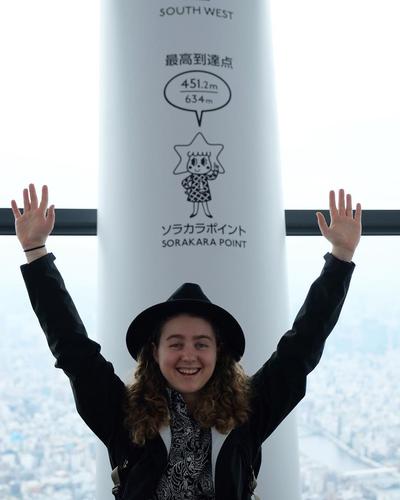
I’m compensating for my shortness by getting on my tippie-toes.

We wandered by Shibuya in the evening, just as the sun was setting. After emerging from the subway, we found ourselves pushing through a nationalist rally. Just as the speaker handed a microphone to a middle-aged woman, we crossed behind her: directly in the camera's line-of-sight.
I guess strong xenophobic sentiment is still and issue. In one of the department stores is a patio which hosts live music and has the best view of Shibuya crossing: one of the busiest intersections in the world.
We climbed to the observation deck and watched the hoards of people flood the street to cross along the chasm of the scramble. It wasn't until I started taking long-exposure shots that I noticed something: within the swarms of people are little stationary specks. You could see clusters of people taking selfies in the dead-centre of the crossing.
Today I landed in Tokyo for the first day of a three week trip around the country. I'm no stranger to long-haul flights. When I was an undergraduate student I had to make the voyage between western Canada and Scotland fairly regularly. In spite of my seasoned travelling, this was a uniquely punishing flight. I made the poor decision of trying to get work done on my flights, and by the time I arrived I paid for it.
I made my way through immigration relatively painlessly and drifted to the airport's train station. By this point, I was running on less than fumes: my tank was empty.
I rested into a coma as the airport train whirred past Narita, through the countryside, and into Tokyo proper. It didn't really click with me---It hadn't really settled that I was so far away until I saw Narita-san standing tall above the canopy of trees. I tried to soak in as much as possible while sinking deeper and deeper into my train seat. Rice paddies, amusement parks, shopping malls, forests all blurring together.
My friend and I found a nice, cheap hotel in Akihabara. Emerging from the station into the Friday-night rush was overwhelming. Salarymen heading to the bars were huddled on every corner.
The first thing I needed was food.
I've travelled a lot; I'm comfortable moving around in places where I don't know the native language. In spite of this, I milled around the same few blocks over and over again---spending well over an hour looking for a place to eat. The major inhibitor was a crushing social anxiety. I didn't want to be rude, but by not being fully aware of social protocol, I was inevitably going to be.
I eventually ended up steeling myself for ramen. Like a social freak, I stood outside of a ramen shop watching how the business people ordered. 1) Go to the kiosk, 2) enter your order, 3) take your seat and hand the waitstaff your ticket. I felt like a social freak for not being able to do something so simple.
It was a slightly solitary experience. People come in, eat, and then leave---a purely nutritional exchange. Like a sit-in taco truck. Only two people the entire time I was there exchanged a word between each other; everyone else ate in silence and then left. Often western people seem afraid of eating alone. After all, You should be able to find people to eat with. That anxiety of looking like a social outcast makes some sense: eating is in many senses a social experience in most western cultures.
On my Way to Japan for the next three weeks!
Edmonton International Airport → Vancouver International Airport → Narita International Airport

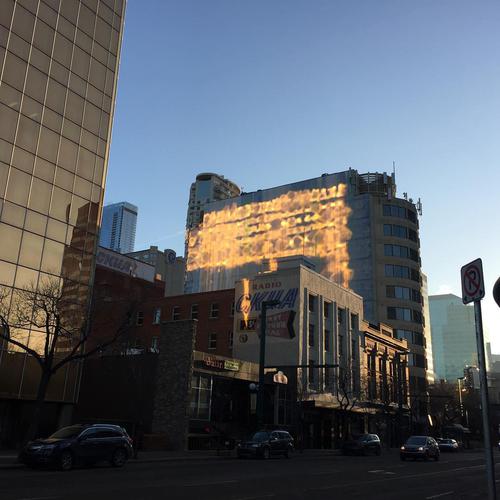
I was walking downtown this morning and caught the last moments of sunrise painting the buildings. The way the light reflects off the golden glass makes the neighboring building look like it has calligraphy scrawled all over it. #yeg #yegdt #urbanphotography
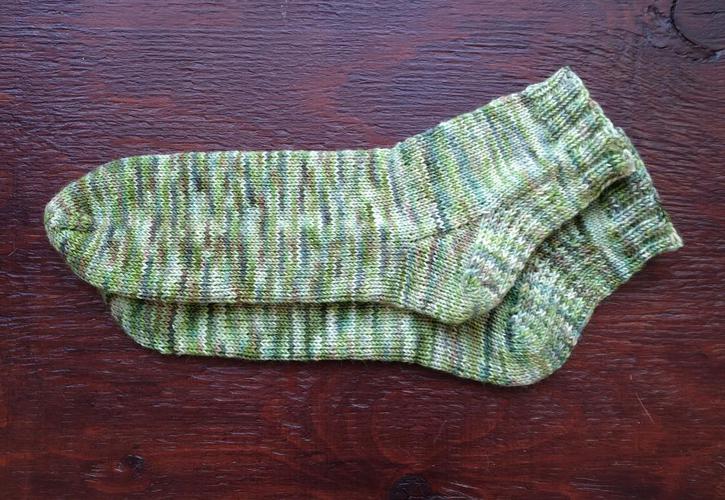
I finished some green socks just in time for St. Patrick’s day ☘️🧦 ended up re-knitting the heels three times trying to get the fit right. During the process, I discovered that I have a fairly high instep, so I can’t use a number of toe-up heel patterns. The fit turned out great, especially considering this is my first pair of socks! I can see custom socks being a regular fixture on my needles this year 🍀
Colourway is ‘Endor’ by @blackcatcustomyarn
Tips and tricks for automation in ML
I went to another workshop at Fern's school of craft! Ash Alberg from the pembina fiber-shed taught to courses focused on using natural materials to dye and print on fabric.
The first course was on eco-printing. Unlike dying, eco-printing is creating a surface print of some source materials--typically plants--on a target material. It's like using a printing press, but involves a chemical transfer between plants and some protein or cellulose based material. For this course, we worked with cotton tea-towels and silk scarves, however, you can print on all sorts of materials, including wood, wool, and leather.
This post is a collection of my notes from the class.
Before you can begin dying or printing, the material must be prepared. Oils and debris accumulate on fabrics. These oils can be on both new fabric as result of initial processing of the materials, or on second-hand materials from use. It's important to remove the oils, as they create a resist--- a section in the fabric where dyes and prints cannot transfer. We remove the oils by scouring the material.
Ash mentioned two detergents for scouring:
For textiles, it's best to throw the material in the wash on the cycle you expect to use to clean the end-product.
Once the materials have been scoured, we pre-mordant them. A mordant is a substance used to cure and fix dye or stain to a textile. For cellulose-based materials we use sources of tannins as our pre-mordant; for protein-based materials we use metal-ion based mordants.
Tannins can be found in rhubarb leaves; however, rhubarb leaves are toxic. If you're extracting tannins from rhubarb, make sure your workspace is well ventilated!
To pre-mordant, we weigh an appropriate amount of mordant based on the weight of the material we are treating, place it in a pot with our material on low heat, and leave it for an hour or two.
Alum is one of the most common pre-mordant to use with protein-based materials, and it's safe to use. You should use 15-20% of the fibre weight in alum for mordant.
After your materials as scoured and mordanted, it's time to print!
At the workshop there were a few bouquets for us to dismember and scatter onto our projects. One thing to remember when eco-printing: just because a plant has a particular colour, doesn't mean that it's going to imprint in that particular colour.
Although eucalyptus is a pretty teal-green, it leaves behind a purple impression. Similarly, the rose petals and leaves left behind colours ranging from black-brown to green.
Once the pieces are in place, there's a number of different ways to leave an impression.
You have to wrap your bundles really tight. No, seriously. If you want your impression to come out, you need to apply substantial pressure. The way you do that is by tightening your bundle and tying it down. It's easy to think that you're bundle is tight enough. You can be oh-so wrong. One of the issues during the workshop was that few people got substantial impressions onto their work. A few people had barely any impression on their work.
This could have been for two reasons: 1) the bundles weren't left in the pots long enough due to time-constraints, or 2) the people's bundles weren't tight enough. Given everyone's bundles were on the stove for roughly the same amount of time, and some of us got striking impressions, my money is on 2).
After the bundles are snug, it's time to give them a bath. Bundles need to be simmered at a medium heat below boiling for a few hours. To give my prints a little extra kick, I brought them home and put them in a slow cooker over-night.
Never use anything to store or cook food that you use for dying and printing. It's important to keep your food-prep and dye-related tools separated. Just because it came from a plant, doesn't mean that it's healthy to consume.
I was happy with how my scarf turned out after a little extra time cooking, but I felt that I could improve it a little bit more. by adding a little bit more pressure to my bundle, and by giving it a little bit more time. Because eco-printing is transfer, not a dye, you can keep re-printing on the fabric to experiment.
Online Suppliers: Maiwa: for natural dyes and fabric. Richter's Seeds: for seeds.
I've heard many people say they need deadlines in order to get work done. Sometimes I wonder how much of a deadline's magic is just brutally enforced time-boxing. If your project necessarily has to end in a couple days, you'll allocate your time effectively. Time is scarce; you need to make the most of it! Conversely, long projects with vague deadlines have a habit of expanding to fit the time you give them.
Most irritating matplotlib error:
AttributeError: Unknown property colour
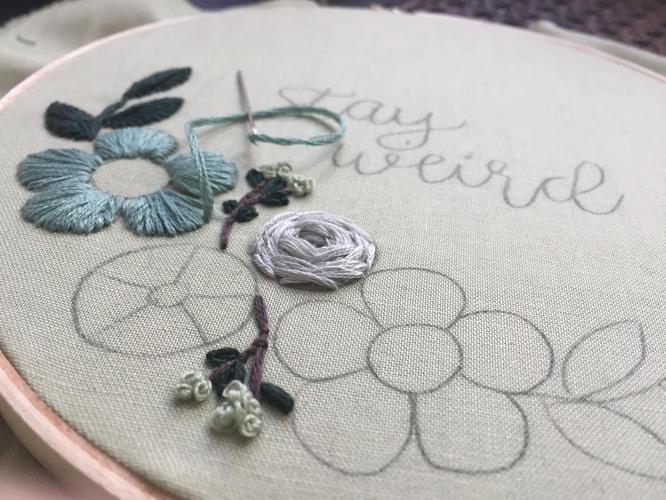
I took a break from ICML reviewing yesterday to go to an embroidery class. My goal is to get good enough to make my own patches to put on jackets and backpacks.
Embroidery is actually strangely addictive! I can see why embroidery is enjoying a revival in the crafting community.
The class was actually really great; having the chance to chat with a bunch of crafters and makers was a blast. It was also the first time in a long time that I've been at an event that's predominantly women that's not focused on tech and professional development.
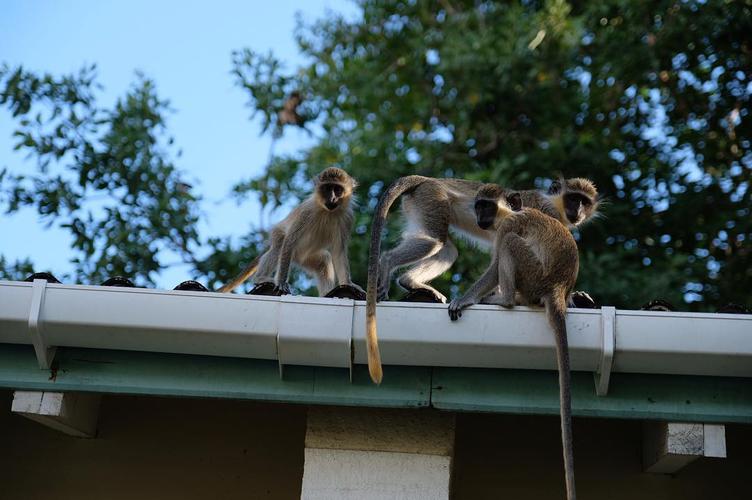
Making more friends 🐒
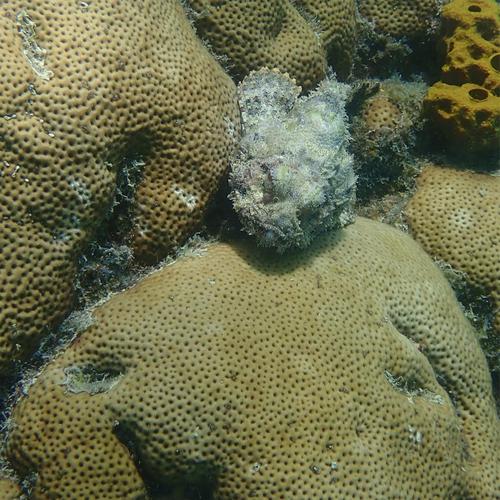
Making friends 🐠
On my way to the barbados
Edmonton International Airport → Toronto Pearson International Airport → Barbados

On science communication and blogging.
I'm going back through my dive logbook after a three year diving hiatus. The software I use to track my dives has become an ungodly mess of company acquisitions and poor software support. Turns out the company that made my dive-computer was bought out by scuba-pro.
To even get my hands on the software to open my dive-log file, I had to scour old forums looking for a hidden link that would take me to the SmartTrak site. That wasn't even enough alone, I had to engage in browser witchcraft to coerce the site to not redirect me to scuba-pro's main site. The file is nowhere else, at least by my searching. Interesting that no one liked SmartTrak enough to keep a mirror of it.
Of course, finding the software didn't solve my problems. oh no. The dates were incorrect on some of my dives. An example malady of poor software support: I could turn the background of dive profiles gradient olive green, but I could not edit basic dive info---e.g., the date and location of a dive. For the first-time in my life, I'm actually experiencing the effects of deprecation in software that I depend on. It's not like I can just give up the logs for dives I've done; It's important that I keep the data I collect when I'm diving to keep track of dive habits and share with dive-shops.
After going through old dev-forums and dive-forums, I found a converter which takes shameful SmartTrack files and converts them into a modified XML for use with SubSurface. At least I can coerce the file into being read as XML, rather than proprietary nonsense. More than that, not only does sub-surface allow me to edit the date of a dive in increments greater than 7, I can edit multiple dives at the same time.
It's the future.
I can't help but feel that this is a sort of digital vagrancy. SubSurface seems great now, but what about in 3 years? 10 years? I know there's a trend of web-based dive-logs, but I don't want to have to shuffle around, converting what has no business being anything but XML or a CSV to bunch of proprietary, uninterpretable file formats.
Having been burnt by SmartTrack, I'm looking for robust export functionality in my next electronic dive-log. Lucky for me, it seems sub-surface is able to export as CSVs. This seems like a clear candidate to make a stand and own my own data.
The whole thing is just screaming to be added to the blog. Time for #indieweb scuba logs. Then if something breaks, it's my own damn fault.
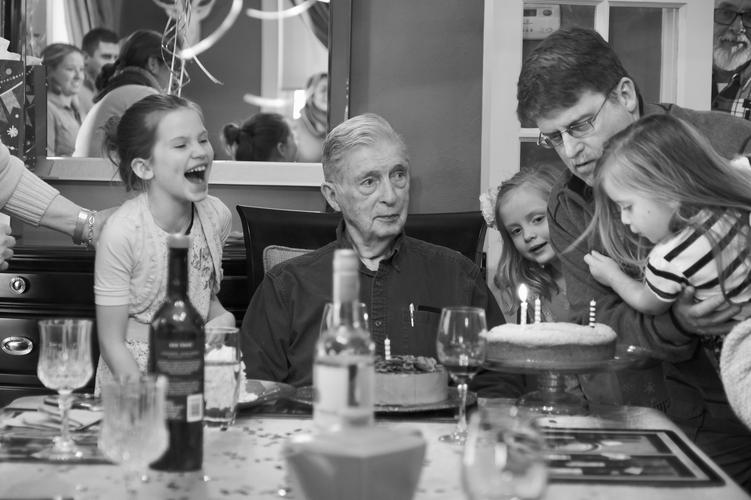
Out in central Canada for my grandpa's 90th birthday.
Edmonton International Airport → Ottawa → Arnprior → Ottawa → Toronto Pearson International Airport → Edmonton International Airport
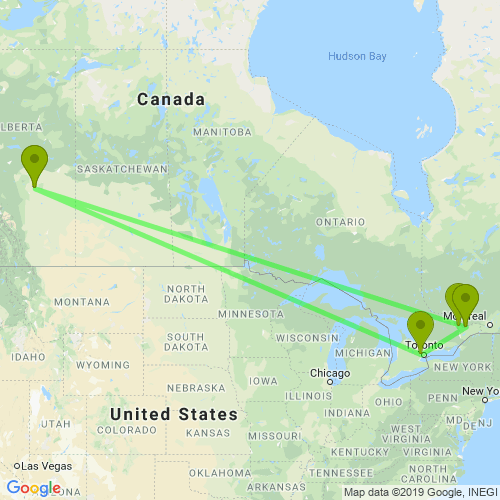
This is an interesting article which digs into what the distinction is between icons, indices, and symbols in Peirce's semiotics.
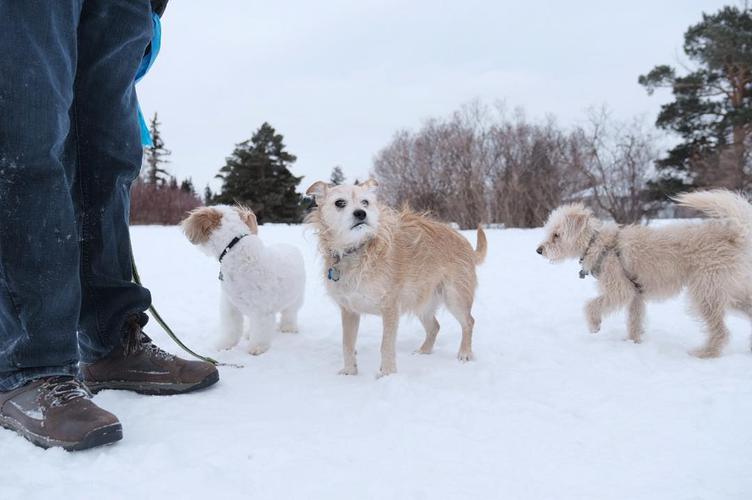
Went for a chilly afternoon walk in Belgravia with my uncle and his dogs. We made a few friends along the way.
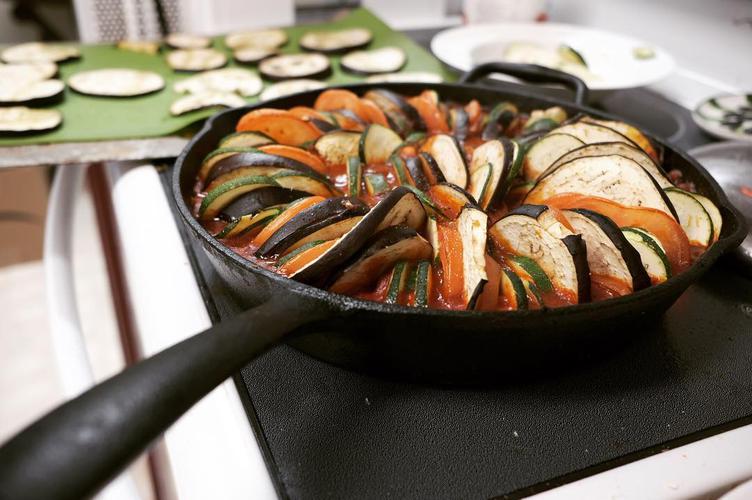
Tried making ratatouille for the first time today 🐁 Yummy, but I think next time I would add more garlic 👌🏼✨
This is a fragment of my notes on Percian semiotics (so it's not particularly readable). Why semiotics? Meaning-making, or how we come to make sense of the world around us is an integral part of inquiry into the mind. While exceptionally fragmented, Peirce's introduction to semiotics is focused on finding from first-principles what the most basic components which make up thought and meaning are.
While a number of terms are over-loaded in cultural every-day usage, it's important to point out that terms like concept--the components of thoughts--do have a particular meaning.
From Perice's perspective, a concept or a sign is made of three indecomposable elements which Peirce calls firstness, secondness, and thirdness. These three components are the building blocks upon which everything we can think about are built. In short, firstness is feeling, secondness is resistance, and thirdness is experience.
I relate these in less anachronistic terms to:
It's not exactly intuitive, and my notes rely heavily on extended quotations to explain the concepts.
Before we have an abstraction which helps us understand the environment, there must be---absent of any categorization, modelling, or understanding---the information or sensation which is used to construct the abstraction. Firstness is "feeling, as distinct from objective perception, will, and thought" (CP 1.302)[1]. It is prior to perception and thought.
A pure nature, or quality, in itself wihtout parts or features, and without embodiment. (CP 1.303)
When you hear firstness, think the raw observations. The fundamental building block for everything that can be present to the mind is what is immediately sensed in a primary sense: the raw stream of information which we use to form perceptions of the environment. Not the sense of experiencing the feelings, but sensorimotor sensation prior to judgements such as feelings and awareness.
That is a phaneron [present to the mind] peculiar to metaphysical thought, not involved in the sensation itself, and therefor not in the quality of feeling, which is entirely contained or superseded , in the actual sensation. The Germans usually call these qualities feelings, feelings of pleasure or pain. To me this seems to be mere repetition of a tradition, never subjected to the test of observation. I can imagine a consciousness whose whole life, alike when wide awake and when drowsy or dreaming, should consist in nothing at all but a violet colour or a stink of rotten cabbage. it is purely a question of what I can imagine and not of what psychological laws permit. The fact that I can imagine this, shows that such a feeling is not in general, in the same sense in which the law of gravitation is general. For nobody can imagine that law to have any being of any kind if it were impossible that there should exist any two masses of matter, or if there were no such things as motion. A true general cannot have any being unless there is to be some prospect of its sometime having occasion to be embodied in a fact, which is itself not a law or anything like a law. A quality of feeling can be imagined without any occurrence, as it seems to me. Its mere may-being gets along with any realisation at all. (CP 1.304)
When Peirce says phaneron, he means what is present to the mind with no claims as to whether or not it is present in reality; he has drawn comparisons to what he means when he says phaneron and what some mean when they say idea (CP 1.284). He is saying that there's no reason there couldn't be primary elements of our conceptualisation of the world which exist independent of any other---pieces which could be composed to make all of our conceptualisation.
Peirce invites us to consider what we think the building blocks of concepts, or thought, might be if we begin with this firstness of sensation as the first piece:
Suppose I begin by inquiring of you, Reader, in what particulars a feeling of redness or of purple without beginning, end, or change...that should constitute the entire universe, would differ from a substance? I suppose you will tell me that no such thing could be alone in the universe because, firstly, it would require a mind to feel it, which would probably not be the feeling itself; secondly the colour...would consist of vibrations; thirdly, none of them could last forever without a flow of time; fourthly, each would have a quality, which would be a determination in several respects, the colour in hue, luminosity, chroma, and vividness...and fifthly, each would require a physical substratum altogether disparate to the feeling itself. (CP 1.305)
And he supposes we propose five pieces starting with Firstness as sensation:
But I point out to you that these things are only known to us by extraneous experience; none of them are [seen in the colour]... Consequently, there can be no logical difficulty in supposing them to be absent, and for my part, I encounter not the slightest psychological difficulty in doing so. To suppose, for example, that there is a flow of time, or any degree of vividness, be it high or low, seems to me quite as uncalled for as to suppose that there is freedom of the press or a magnetic field. (CP 1.305)
Peirce then outlines how all of these additions are reducible. The flow of time and minds as perceivers of the sensation of red are all constraints which we put in place given additional understanding. On a personal level, none of them are required to experience sensations such as redness, or whistling.
It is clear that although these notions aren't necessary for the sensation which peirce treats as primary, we do use notions of time and understanding of the properties of things we sense to conceptualise and reason about the world.
Peirce acknowledges this, pointing out that while it's conceivable to just experience the world on a moment-to-moment sensory basis, that such an agent or system would be cognitively limited.
We can, it is true, see what a feeling in general is like; that, for example, this or that red is a feeling; and it is perfectly conceivable that a being should have that color for its entire consciousness, throughout a lapse of time, and therefore at every instant of time. But such a being could never know anything about its own consciousness. It I could not think anything that is expressible as a proposition. It could never know anything about its own consciousness. it could have no idea of such a thing. It would be confined to feeling that colour. (CP 1.310)
The point being made that which is first can only be an exact reproduction of itself. Simply having the same sensation, or subset of sensations, in the same mind at a different time is something different from the firstness itself. Or, if in a different mind, the identity would depend on the mind, violating the reproduction.
"a pure nature, or quality, in itself without parts, or features, or embodiment" (CP 1.303).
that which "involves no analysis, comparison, or any process whatsoever, nor consists in whole or in part of any act..." (CP 1.306)
"A state, which is in its entirety in every moment of time as long as it endures"
While sensation is integral to how we conceive of our world, it's also clear that we do not understand our world using the raw, unprocessed sensation from the environment alone. We can see the influence things beyond sesnation in how we perceive our environment: there are blind spots in our vision which we do not perceive. Optical illusions can convince us perceptually that things are not as they truly are. There is some processing which enables us to understand our environment in terms of an abstraction.
Contemplate anything by itself---anything whatever that can be so contemplated. Attend to the whole and drop the parts out of attention altogether. On can approximate nearly enough to the accomplishment of that to see that the result of its perfect accomplishment would be that on quality of feeling. This quality of feeling would in itself, as so contemplated, have no parts. It would be unlike any other such quality of feeling. In itself, it would not even resemble any other; for resemblance has its being only in comparison. contemplate, however complex may be the object, it follows that there is nothing else in immediate consciousness. To be conscious is nothing else than to feel. (CP 1.317)
Pierce then makes the observation "what room, then, is there for secundans and tertians?" Why is there anything else other than instantaneous feeling as an irreducible building block of building symbols?
Understanding of the environment is not just based on the perceptions of the environment, but also the relationship between things. Redness has a character or has properties to it which we can understand in terms of relations between different moments or different independent sensations.
To explain this, we turn to actions and their consequences. Pierce explores this by discussing an agent's effort and the consequences of it.
An effort is not a feeling, nor anything priman or protoidal. There are feelings connected with it: they are the sum of consciousness during the effort. By it is conceivable that a man should have it in his power directly to summon up all those feelings, or any feelings. He could not, in any world, be endowed with the power of summoning up an effort to which there did not happen to be a resistance all ready to exist. (CP 1.321)
Here, I choose to read effort as action, or more generally as behaviour. The point he makes here is that the actions an agent takes in its environment are fundamentally separate from the raw feelings of the agent. They may influence the feelings which are felt during the instants during which the behaviour is being executed, but they are not the same as the behaviours being executed.
By struggle, I must explain that I mean mutual action between two things regardless of any sort of third or medium and in particular regardless of any law of action. (CP 1.325)
For example, an agent in its environment may bump into a wall. There is a relationship between the wall and the agent. The agent took an action, leading it to bump into the wall. Resistance in the environment caused a sensation of force against the agent's bump sensor.
The effort and resistance---the action and the sensation---are secondness. Using this example, we can describe a sense of 'other-ness'.
Secondness isn't limited to 'otherness'. Things which we wish to express about the world which are relations between two different moments are secondness. Peirce draws connections to causation and statistics as examples which related to seconds by drawing relations between two senses.
The idea of second is predominant in the ideas of causation and statical force. For cause and effect are two; and statical forces always occur between pairs. Constraint is a secondness. In the flow of time in the mind, the past appears to act directly upon the future, its effect being called memory, while the future only acts upon the past through the medium of thirds. Phenomena of this sort in the outward world shall be considered below. I sense and will , there are reactions of Secondness between the ego and the non-ego. (which non-ego may be an object of direct consciousness). In will, the events leading up to the act are internal, and we say that we are agents more than patients. In sense, the antecedent events are not within us; and besides, the object of which we form a perception (though not that which immediately acts upon the nerves) remains unaffected. Consequently, we say that we are dominant; for the real is that which insists upon forcing its way to recognition as something other than the mind's creation. (CP 1.325)
Relating these notions back to machine intelligence: methods which perform classification or regression are secondness. Focusing specifically on Reinforcement Learning methods, we could consider a policy evaluation method---a method which estimates either the value or some accumulation of sensation for a given state---to be a second. There is a relation drawn between an action and a response.
As an aside, Pierce makes an interesting observation: before English adopted the word two, we simply used other.
Finally, there must be something which connects the relation to the instances which are a party to it: the seconds to the firsts. This is what Peirce considers that which connects is the third.
It may seem unclear why we should need a third. We have moments which we sense, and we have the perception which relations between moments give rise to. What else could there be?
Typically, we categorize the pipeline as having two parts: 1) immediate sensation and 2) perception. Peirce breaks what we would usually consider perception into a third category: experience (CP 1.335). The reasoning behind this is that perception of events is not cognition of change.
If an ambulance is racing towards you and suddenly passes, due to the doppler effect the sound of the siren will lower as it passes you. You have a sensation of the whistle, which gives rise to the perception of the whistle, but the cognition and understanding of the change in tone---awareness of the changes and contrasts of awareness---is experience.
By the third, I mean the medium or connecting bond between the absolute first and last. The beginning is first, the end second, the middle third. The end is second, the means third. The thread of life is a third; the fate that snips it, its second. A fork in the road is a third, it supposes three ways; a straight road, considered merely as a connection between two places is second, but so far as it implies passing through intermediate places it is third. Position is first, velocity or the relation of two successive positions second, acceleration or the relation of three successive positions third. But velocity in so far as it is continuous also involves a third. Continuity represents Thirdness almost to perfection. Every process comes under that head. Moderation is a kind of Thirdness. The positive degree of an adjective is first, the superlative second, the contemplative third. All exaggerated language, "supreme," "utter," "matchless," "root and branch," is the furniture of minds which think of seconds and forget thirds. Action is second, but conduct is third. Law as an active force is second, but order and legislation are third. Sympathy, flesh and blood, that by which I feel my neighbour's feelings, is third. (CP 1.337)
This description is a touch melodramatic. Extending on the metaphor of a road: a place is a first because it is simply a location in relation to nothing else. When we make a road connecting two places---two firsts---we create a second by drawing a relation between the two firsts.
If we reflect back on the previous robot example, an analogy can be made between the the immediate sensation and the value estimate. It has some estimation which predicts that it will bump into the wall. The estimate for that state is a second, the estimator for all given states is third.
It is impossible to resolve everything in our thoughts into those two elements. We may say that the bulk of what is actually done consists of Secondness--or better, Secondness is the predominant character of what has been done. The immediate present, could we seize it , would have no character but its Firstness. Not that I mean to say immediate consciousness...would would be Firstness, but the quality of what we are immediately conscious of... is Firstness. (CP 1.343)
When we categorize what we think about, it's clear that a lot of what our thoughts consist of can fit into firstness and secondness. Moments are clearly influencing our thoughts on a moment to moment basis (Firstness). These sensations give rise to perception and an understanding of relations between the moments, including how our behaviour influences sensation on a moment-to-moment basis (Secondness).
In general, we may say that meanings are inexhaustible. We are too apt to think that what one means to do and the meaning of a word are quite unrelated meanings of the word 'meaning', or that they are only connected by both referencing some operation of the mind... (CP 1.343)
This is kind of a classic pragmatic point to make: that the meaning of some word is not unrelated to behaviour. The use of a concept and the consequences of a behaviour are directly responsible for constructing meaning.
In tuth the only difference is that when a person means to do anything he is in some state in consequence of which the brute reactions between things will be moulded into conformity to form to which the man's mind itself moulded, while the meaning of a word really lies in the way in which it might, in a proper position in a proposition believed, tend to mould the conduct of a person into conformity to that to which it is itself moulded. (CP 1.343)
This is drawing a comparison demonstrating how meaning in a linguistic sense is related to meaning in an active behavioural sense: we judge meaning in both cases based on their consequences.
Not only will meaning always, more or less, in the long run, mould reactions itself, but it is only in doing so that its own being consists. For this reason, I call this element of the phenomenon or object of thought the element of Thirdness. It is that which is what it is by imparting a quality to the reactions in the future. (CP 1.343)
it is a priori impossible that there should be an indecomposable element which is what it is relatively to a second, a third and a fourth, The obvious reason is that which combines two will by repetition combine any number. Nothing could be simpler; nothing in philosophy is more important. We find then a apriori that there are three categories of undecomposable elements to be expected in the phaneron: those which are simply positive totals, those which involve dependence but not combination, those which involve combination. Now let us turn to the phaneron and see what we find in fact. (CP 1.298-299)
[1] I use Percian citations which are standard for citing Peirce's works. Here CP m.n stands for Collected Papers volume m paragraph n.
Thanks to Oliver Oxton for the helpful chats.
Charles Peirce on Skepticism: "I applaud scepticism with all my heart provided it have four qualities: first, that it be sincere and real doubt; second, that it be aggressive; third, that it push inquiry; and fourth, that it stand ready to acknowledge what it now doubts as soon as the doubted element comes clearly to light" (CP 1.344)
There is a category which the rough and tumble of life renders most familiarly prominent. We are continually bumping up against hard fact. We expected on thing, or passively took it for granted, and had the image of it in our minds, but experience forces that idea into the background, and compels us to think quite differently. You get this kind of consciousness in some approach to purity when you put your shoulder against a door and try to force it open. You have a sense of resistance and at the same time a sense of effort. There can be no resistance without effort; there can be no effort without resistance. They are only two ways of describing the same experience. It is a double consciousness. We become aware of ourself in becoming aware of the not-self. The waking state is a consciousness of reaction; and as the consciousness itself is two-sided, so it has also two varieties; namely, action, where our modification of other things is more prominent than their reaction on us, and perception, where their effect on us is overwhelmingly greater than our effect on them. And this notion, of being such as other things make us, is such a prominent part of our life that we conceive other things also to exist by virtue of their reactions against each other. The idea of other, of not, becomes a very pivot of thought. To this element I give the name secondness. (CP 1.324)
I begin with the [element] which the rough and tumble of life renders most familiarly prominent. We are continually bumping up against hard fact. We expected one thing, or passively took it for granted, and had the image of it in our minds, but experience forces that idea into the background, and compels us to think quite differently. You get this kind of consciousness in some approach to purity when you put your shoulder against a door and try to force it open. You have a sense of resistance and at the same time a sense of effort. There can be no resistance without effort; there can be no effort without resistance. They are only two ways of describing the same experience ....
... The waking state is a consciousness of reaction; and as the consciousness itself is two-sided, so it has also two varieties; namely, action, where our modification of other things is more prominent than their reaction on us, and perception, where their effect on us is overwhelmingly greater than our effect on them (CP 1.32)
This is interesting because it gives a sort-of enactive and embodied approach.

"By an Object, I mean anything we can think; anything we can talk about. By real object, I mean anything of which whatever is true is so whether we think it to be so or not. To this definition, it might be objected that it applies to any object; since if any object is unreal, it is so whether we think it to be so or not: and we frequently think unreal objects to be real, but that objection falls to the ground, since we cannot think an unreal object to be real: we only think of some idea in mind as applying a [difficult to read] predicate to something out of our mind. Or, to state the objection otherwise, the only object of of which nothing else is true except unreality, is meerly the abstract idea of unreal and if we think that to be real..."
From Peirce's manuscripts: Reflections on Real and Unreal Objects (MS [R] 996)
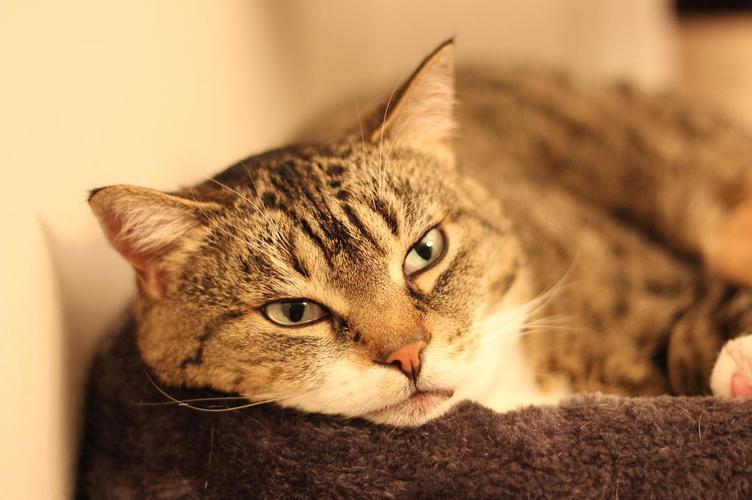
Lazy Sunday.
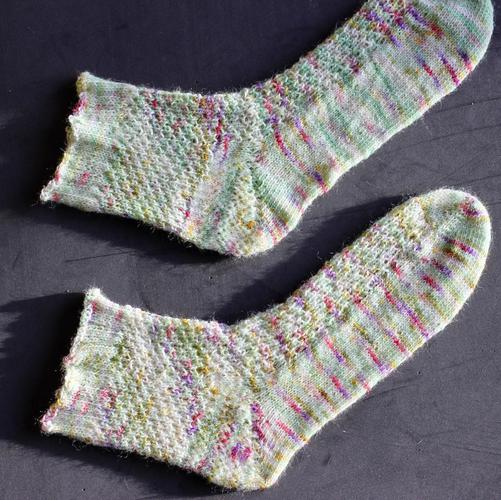
Hot off the needles, my first pair of socks! The yarn is from @lichenandlace in wildflower, which I picked up from @yarnsuntangled in #yyz during the summer. I really like how the colour way looks like flowers on a mountainside—it really reminds me of spring! 🌱🌸

I often focus on the scenes in travel photography, cutting out people wherever possible; however, after binge-reviewing my old albums, I've noticed that the best photos are always ones where people are interacting with the environment--even when they're tourists!
Today I bit the data management bullet and started reviewing old photos. Geeze, I've forgotten how tedious it can be reviewing photos en masse: selecting them, editing them, exporting them, properly arranging them into albums..,
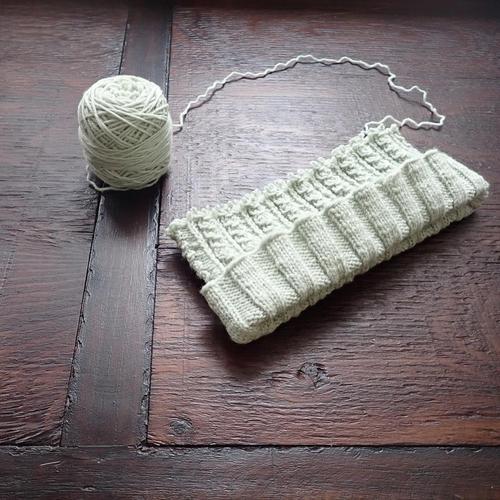
The most difficult part of any knitting project: unraveling because you dramatically underestimated how much yarn you have 🤦🏼♀️ I suppose I should be more mindful of my gauge.